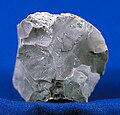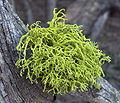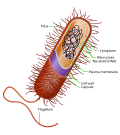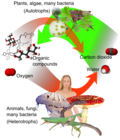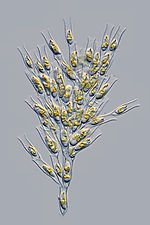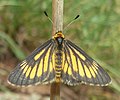Search results
- Cyanotoxin (redirect from Cyanobacteria bloom)Cyanotoxins are toxins produced by cyanobacteria (also known as blue-green algae). Cyanobacteria are found almost everywhere, but particularly in lakes...47 KB (5,135 words) - 19:42, 5 January 2024
- bacteriological code. However, cyanobacteria were still covered by the botanical code. Starting in 1999, cyanobacteria were covered by both the botanical...11 KB (1,296 words) - 17:21, 13 January 2024
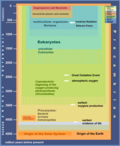 Great Oxidation Event (section Cyanobacteria evolution)supplies at the end of the GOE. The GOE is inferred to have been caused by cyanobacteria that evolved porphyrin-based photosynthesis, which produces dioxygen...80 KB (9,192 words) - 04:14, 29 April 2024
Great Oxidation Event (section Cyanobacteria evolution)supplies at the end of the GOE. The GOE is inferred to have been caused by cyanobacteria that evolved porphyrin-based photosynthesis, which produces dioxygen...80 KB (9,192 words) - 04:14, 29 April 2024 Evolution of bacteria (section Cyanobacteria)ago, oxygen had appeared. This indicates that oceanic, photosynthetic cyanobacteria evolved during this period because they were the first microbes to produce...18 KB (1,664 words) - 17:55, 22 March 2024
Evolution of bacteria (section Cyanobacteria)ago, oxygen had appeared. This indicates that oceanic, photosynthetic cyanobacteria evolved during this period because they were the first microbes to produce...18 KB (1,664 words) - 17:55, 22 March 2024- diatoms and cyanobacteria are generally the most important primary producers in the open ocean. Many of these cells, especially cyanobacteria, are too small...3 KB (337 words) - 02:30, 14 March 2023
 Anabaena (category Cyanobacteria genera)Anabaena is a genus of filamentous cyanobacteria that exist as plankton. They are known for nitrogen-fixing abilities, and they form symbiotic relationships...9 KB (779 words) - 22:04, 29 December 2023
Anabaena (category Cyanobacteria genera)Anabaena is a genus of filamentous cyanobacteria that exist as plankton. They are known for nitrogen-fixing abilities, and they form symbiotic relationships...9 KB (779 words) - 22:04, 29 December 2023- Girvanella (category Cyanobacteria genera)(2020). "Diversity and systematics of Middle-Late Ordovician calcified cyanobacteria and associated microfossils from Ordos Basin, North China". Journal...4 KB (300 words) - 06:13, 6 January 2024
 Marine primary production (section Cyanobacteria)generated by a diverse collection of marine microorganisms called algae and cyanobacteria. Together these form the principal primary producers at the base of...82 KB (8,306 words) - 15:22, 2 April 2024
Marine primary production (section Cyanobacteria)generated by a diverse collection of marine microorganisms called algae and cyanobacteria. Together these form the principal primary producers at the base of...82 KB (8,306 words) - 15:22, 2 April 2024 Thylakoids are membrane-bound compartments inside chloroplasts and cyanobacteria. They are the site of the light-dependent reactions of photosynthesis...37 KB (4,369 words) - 00:37, 13 March 2024
Thylakoids are membrane-bound compartments inside chloroplasts and cyanobacteria. They are the site of the light-dependent reactions of photosynthesis...37 KB (4,369 words) - 00:37, 13 March 2024- shellfish may accumulate toxins produced by microscopic algae, such as cyanobacteria, diatoms and dinoflagellates. The syndromes are:[citation needed] Amnesic...2 KB (92 words) - 15:28, 12 January 2023
 Nostoc (category Cyanobacteria genera)as witches' butter), and witch's jelly, is the most common genus of cyanobacteria found in a variety of both aquatic and terrestrial environments that...24 KB (1,469 words) - 16:27, 6 December 2023
Nostoc (category Cyanobacteria genera)as witches' butter), and witch's jelly, is the most common genus of cyanobacteria found in a variety of both aquatic and terrestrial environments that...24 KB (1,469 words) - 16:27, 6 December 2023 Nostocales (category Cyanobacteria stubs)The Nostocales are an order of cyanobacteria containing most of its species. It includes filamentous forms, both simple or branched, and both those occurring...2 KB (93 words) - 00:17, 14 October 2023
Nostocales (category Cyanobacteria stubs)The Nostocales are an order of cyanobacteria containing most of its species. It includes filamentous forms, both simple or branched, and both those occurring...2 KB (93 words) - 00:17, 14 October 2023 Lake often has a spring cyanobacteria bloom. Recent studies suggest that significant exposure to high levels of cyanobacteria producing toxins such as...4 KB (415 words) - 13:49, 14 October 2022
Lake often has a spring cyanobacteria bloom. Recent studies suggest that significant exposure to high levels of cyanobacteria producing toxins such as...4 KB (415 words) - 13:49, 14 October 2022 Algal mat (section Cyanobacteria forming algal mats)surface of water or rocks. They are typically composed of blue-green cyanobacteria and sediments. Formation occurs when alternating layers of blue-green...10 KB (1,304 words) - 16:06, 17 April 2024
Algal mat (section Cyanobacteria forming algal mats)surface of water or rocks. They are typically composed of blue-green cyanobacteria and sediments. Formation occurs when alternating layers of blue-green...10 KB (1,304 words) - 16:06, 17 April 2024 Spirulina (genus) (redirect from Spirulina (cyanobacteria))Spirulina is a genus of cyanobacteria. It is not classed as an algae, despite the common name of cyanobacteria being blue-green algae. Spirulina is commonly...4 KB (255 words) - 23:50, 31 January 2024
Spirulina (genus) (redirect from Spirulina (cyanobacteria))Spirulina is a genus of cyanobacteria. It is not classed as an algae, despite the common name of cyanobacteria being blue-green algae. Spirulina is commonly...4 KB (255 words) - 23:50, 31 January 2024 mustard weed/thale cress (Arabidopsis thaliana) and rice (Oryza sativa). Cyanobacteria remained principal primary producers throughout the Proterozoic Eon...16 KB (1,784 words) - 09:44, 9 April 2024
mustard weed/thale cress (Arabidopsis thaliana) and rice (Oryza sativa). Cyanobacteria remained principal primary producers throughout the Proterozoic Eon...16 KB (1,784 words) - 09:44, 9 April 2024- Flavodoxin (section Flavodoxins in Cyanobacteria)have been isolated from prokaryotes, cyanobacteria, and some eukaryotic algae. Originally found in cyanobacteria and clostridia, flavodoxins were discovered...8 KB (874 words) - 00:04, 9 January 2024
 light, nutrients, and temperature can cause cyanobacteria to proliferate and form harmful blooms. Cyanobacteria blooms can cause hypoxia and produce high...38 KB (4,469 words) - 16:29, 22 April 2024
light, nutrients, and temperature can cause cyanobacteria to proliferate and form harmful blooms. Cyanobacteria blooms can cause hypoxia and produce high...38 KB (4,469 words) - 16:29, 22 April 2024 Phycobiliprotein (category Cyanobacteria proteins)Phycobiliproteins are water-soluble proteins present in cyanobacteria and certain algae (rhodophytes, cryptomonads, glaucocystophytes). They capture light...10 KB (536 words) - 17:29, 4 October 2023
Phycobiliprotein (category Cyanobacteria proteins)Phycobiliproteins are water-soluble proteins present in cyanobacteria and certain algae (rhodophytes, cryptomonads, glaucocystophytes). They capture light...10 KB (536 words) - 17:29, 4 October 2023 Butanol fuel (section Cyanobacteria)aldehydes. Isobutanol-producing species of cyanobacteria offer several advantages as biofuel synthesizers: Cyanobacteria grow faster than plants and also absorb...40 KB (4,367 words) - 22:44, 14 February 2024
Butanol fuel (section Cyanobacteria)aldehydes. Isobutanol-producing species of cyanobacteria offer several advantages as biofuel synthesizers: Cyanobacteria grow faster than plants and also absorb...40 KB (4,367 words) - 22:44, 14 February 2024 Synechococcales (category Cyanobacteria stubs)The Synechococcales are an order of cyanobacteria, with over 70 genera. It includes both filamentous and single-celled types. Komárek J, Kaštovský J,...2 KB (47 words) - 19:38, 13 October 2023
Synechococcales (category Cyanobacteria stubs)The Synechococcales are an order of cyanobacteria, with over 70 genera. It includes both filamentous and single-celled types. Komárek J, Kaštovský J,...2 KB (47 words) - 19:38, 13 October 2023- catalyzing the reduction of nitrogen gas (N2) to ammonia (NH3). In cyanobacteria, this enzyme system is housed in a specialized cell called the heterocyst...46 KB (4,916 words) - 12:21, 26 April 2024
- Phycoerythrin (category Cyanobacteria proteins)complex from the light-harvesting phycobiliprotein family, present in cyanobacteria, red algae and cryptophytes, accessory to the main chlorophyll pigments...22 KB (2,010 words) - 13:43, 9 March 2024
 Synechocystis (category Cyanobacteria genera)Synechocystis is a genus of unicellular, freshwater cyanobacteria in the family Merismopediaceae. It includes a strain, Synechocystis sp. PCC 6803, which...3 KB (280 words) - 06:25, 27 December 2022
Synechocystis (category Cyanobacteria genera)Synechocystis is a genus of unicellular, freshwater cyanobacteria in the family Merismopediaceae. It includes a strain, Synechocystis sp. PCC 6803, which...3 KB (280 words) - 06:25, 27 December 2022 Oscillatoria (category Cyanobacteria genera)They are the first peptides with this activity to have been found in cyanobacteria. Serinolamide A is a cannabinoid structurally related to Anandamide...8 KB (673 words) - 13:42, 29 April 2024
Oscillatoria (category Cyanobacteria genera)They are the first peptides with this activity to have been found in cyanobacteria. Serinolamide A is a cannabinoid structurally related to Anandamide...8 KB (673 words) - 13:42, 29 April 2024 Light-dependent reactions (section Cyanobacteria)same transmembrane structures are also found in cyanobacteria. Unlike plants and algae, cyanobacteria are prokaryotes. They do not contain chloroplasts;...28 KB (3,452 words) - 22:04, 10 April 2024
Light-dependent reactions (section Cyanobacteria)same transmembrane structures are also found in cyanobacteria. Unlike plants and algae, cyanobacteria are prokaryotes. They do not contain chloroplasts;...28 KB (3,452 words) - 22:04, 10 April 2024 energy of harvested photons to photosystem II and photosystem I in cyanobacteria and in the chloroplasts of red algae and glaucophytes. They were lost...8 KB (888 words) - 05:37, 22 April 2024
energy of harvested photons to photosystem II and photosystem I in cyanobacteria and in the chloroplasts of red algae and glaucophytes. They were lost...8 KB (888 words) - 05:37, 22 April 2024 Synechococcus (category Cyanobacteria genera)described in 1979, and was originally defined to include "small unicellular cyanobacteria with ovoid to cylindrical cells that reproduce by binary traverse fission...29 KB (3,251 words) - 22:23, 21 March 2024
Synechococcus (category Cyanobacteria genera)described in 1979, and was originally defined to include "small unicellular cyanobacteria with ovoid to cylindrical cells that reproduce by binary traverse fission...29 KB (3,251 words) - 22:23, 21 March 2024 Prochlorococcus (category Cyanobacteria genera)Prochlorococcus is a genus of very small (0.6 μm) marine cyanobacteria with an unusual pigmentation (chlorophyll a2 and b2). These bacteria belong to...37 KB (3,696 words) - 08:20, 25 April 2024
Prochlorococcus (category Cyanobacteria genera)Prochlorococcus is a genus of very small (0.6 μm) marine cyanobacteria with an unusual pigmentation (chlorophyll a2 and b2). These bacteria belong to...37 KB (3,696 words) - 08:20, 25 April 2024 chlorophylls, which are the primary pigments in plants, algae, and cyanobacteria. Organisms that contain bacteriochlorophyll conduct photosynthesis to...10 KB (728 words) - 11:50, 27 December 2023
chlorophylls, which are the primary pigments in plants, algae, and cyanobacteria. Organisms that contain bacteriochlorophyll conduct photosynthesis to...10 KB (728 words) - 11:50, 27 December 2023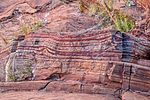 in this period. These iron rich formations were formed as anaerobic cyanobacteria produced waste oxygen that combined with iron, forming magnetite (Fe3O4...5 KB (311 words) - 16:10, 12 November 2023
in this period. These iron rich formations were formed as anaerobic cyanobacteria produced waste oxygen that combined with iron, forming magnetite (Fe3O4...5 KB (311 words) - 16:10, 12 November 2023 or plants, whether fossil or non-fossil, including blue-green algae (Cyanobacteria), chytrids, oomycetes, slime moulds and photosynthetic protists with...12 KB (1,426 words) - 12:09, 31 October 2023
or plants, whether fossil or non-fossil, including blue-green algae (Cyanobacteria), chytrids, oomycetes, slime moulds and photosynthetic protists with...12 KB (1,426 words) - 12:09, 31 October 2023- heterotrophic. In contrast, green plants, red algae, brown algae, and cyanobacteria are all autotrophs, which use photosynthesis to produce their own food...3 KB (216 words) - 02:09, 20 October 2023
 Oscillatoriales (category Cyanobacteria stubs)The Oscillatoriales are an order of cyanobacteria. Komárek J, Kaštovský J, Mareš J, Johansen JR (2014). "Taxonomic classification of cyanoprokaryotes...1 KB (35 words) - 12:42, 25 July 2021
Oscillatoriales (category Cyanobacteria stubs)The Oscillatoriales are an order of cyanobacteria. Komárek J, Kaštovský J, Mareš J, Johansen JR (2014). "Taxonomic classification of cyanoprokaryotes...1 KB (35 words) - 12:42, 25 July 2021- Nostoc (cyanobacteria) that grow inside the plant parallel with its direction of growth. Unlike other hornworts with symbiotic cyanobacteria that enters...4 KB (344 words) - 18:48, 24 September 2023
 Microcystis (category Cyanobacteria genera)Microcystis is a genus of freshwater cyanobacteria that includes the harmful algal bloom-forming Microcystis aeruginosa. Many members of a Microcystis...11 KB (1,070 words) - 00:38, 16 October 2023
Microcystis (category Cyanobacteria genera)Microcystis is a genus of freshwater cyanobacteria that includes the harmful algal bloom-forming Microcystis aeruginosa. Many members of a Microcystis...11 KB (1,070 words) - 00:38, 16 October 2023 packed microtubules. Nassula use this structure to ingest filamentous cyanobacteria, drawing individual strands of blue-green algae through the cytopharynx...7 KB (697 words) - 12:12, 13 August 2023
packed microtubules. Nassula use this structure to ingest filamentous cyanobacteria, drawing individual strands of blue-green algae through the cytopharynx...7 KB (697 words) - 12:12, 13 August 2023 scales Chlorophyll is any of several related green pigments found in cyanobacteria and in the chloroplasts of algae and plants. Its name is derived from...34 KB (3,446 words) - 22:30, 20 April 2024
scales Chlorophyll is any of several related green pigments found in cyanobacteria and in the chloroplasts of algae and plants. Its name is derived from...34 KB (3,446 words) - 22:30, 20 April 2024 Marine prokaryotes (section Cyanobacteria)independent events, in organisms as diverse as sponges, brown algae, cyanobacteria, slime moulds and myxobacteria. In 2016 scientists reported that, about...139 KB (12,873 words) - 04:37, 12 February 2024
Marine prokaryotes (section Cyanobacteria)independent events, in organisms as diverse as sponges, brown algae, cyanobacteria, slime moulds and myxobacteria. In 2016 scientists reported that, about...139 KB (12,873 words) - 04:37, 12 February 2024- commune. Other cyanobacteria lack heterocysts and can fix nitrogen only in low light and oxygen levels (e.g. Plectonema). Some cyanobacteria, including the...15 KB (1,886 words) - 18:51, 30 March 2024
 Biological soil crust (section Cyanobacteria)Biological soil crusts are most often composed of fungi, lichens, cyanobacteria, bryophytes, and algae in varying proportions. These organisms live...34 KB (4,083 words) - 21:48, 25 April 2024
Biological soil crust (section Cyanobacteria)Biological soil crusts are most often composed of fungi, lichens, cyanobacteria, bryophytes, and algae in varying proportions. These organisms live...34 KB (4,083 words) - 21:48, 25 April 2024 Allophycocyanin (category Cyanobacteria proteins)red light (650 and 660 nm max, respectively), and is readily found in Cyanobacteria (also called blue-green algae), and red algae. Phycobilin pigments have...4 KB (427 words) - 19:16, 23 January 2024
Allophycocyanin (category Cyanobacteria proteins)red light (650 and 660 nm max, respectively), and is readily found in Cyanobacteria (also called blue-green algae), and red algae. Phycobilin pigments have...4 KB (427 words) - 19:16, 23 January 2024- Microbial DNA barcoding (section Cyanobacteria)management, too. Cyanobacteria are a group of photosynthetic prokaryotes. Similar as in other prokaryotes, taxonomy of cyanobacteria using DNA sequences...23 KB (2,725 words) - 22:23, 3 December 2023
 Chroococcales (category Cyanobacteria stubs)The Chroococcales (/ˌkroʊəˌkɒˈkeɪliːz/) are an order of cyanobacteria in some classifications which includes the harmful algal bloom Microcystis aeruginosa...2 KB (123 words) - 00:37, 14 October 2023
Chroococcales (category Cyanobacteria stubs)The Chroococcales (/ˌkroʊəˌkɒˈkeɪliːz/) are an order of cyanobacteria in some classifications which includes the harmful algal bloom Microcystis aeruginosa...2 KB (123 words) - 00:37, 14 October 2023 Oscillatoriaceae (category Cyanobacteria families)The Oscillatoriaceae are a family of cyanobacteria. Komárek J, Kaštovský J, Mareš J, Johansen JR (2014). "Taxonomic classification of cyanoprokaryotes...1 KB (35 words) - 18:51, 13 October 2023
Oscillatoriaceae (category Cyanobacteria families)The Oscillatoriaceae are a family of cyanobacteria. Komárek J, Kaštovský J, Mareš J, Johansen JR (2014). "Taxonomic classification of cyanoprokaryotes...1 KB (35 words) - 18:51, 13 October 2023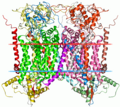 complex or ubiquinol-cytochrome c reductase. In plant chloroplasts and cyanobacteria, there is an homologous protein, cytochrome b6, a component of the...9 KB (876 words) - 16:29, 9 April 2024
complex or ubiquinol-cytochrome c reductase. In plant chloroplasts and cyanobacteria, there is an homologous protein, cytochrome b6, a component of the...9 KB (876 words) - 16:29, 9 April 2024 Phormidium (category Cyanobacteria genera)Phormidium is a genus of cyanobacteria in the family Oscillatoriaceae. As a result of recent genetic analyses, several new genera were erected from this...2 KB (134 words) - 11:25, 1 January 2024
Phormidium (category Cyanobacteria genera)Phormidium is a genus of cyanobacteria in the family Oscillatoriaceae. As a result of recent genetic analyses, several new genera were erected from this...2 KB (134 words) - 11:25, 1 January 2024 Harmful algal bloom (section Cyanobacteria)driven Langmuir circulation and their biological effects. HABs from cyanobacteria (blue-green algae) can appear as a foam, scum, or mat on or just below...161 KB (18,110 words) - 09:52, 3 April 2024
Harmful algal bloom (section Cyanobacteria)driven Langmuir circulation and their biological effects. HABs from cyanobacteria (blue-green algae) can appear as a foam, scum, or mat on or just below...161 KB (18,110 words) - 09:52, 3 April 2024 Lyngbya (category Cyanobacteria genera)Lyngbya is a genus of cyanobacteria, unicellular autotrophs that form the basis of the oceanic food chain. As a result of recent genetic analyses, several...6 KB (506 words) - 16:02, 26 October 2023
Lyngbya (category Cyanobacteria genera)Lyngbya is a genus of cyanobacteria, unicellular autotrophs that form the basis of the oceanic food chain. As a result of recent genetic analyses, several...6 KB (506 words) - 16:02, 26 October 2023 is a red phycobilin, i.e. an open tetrapyrrole chromophore found in cyanobacteria and in the chloroplasts of red algae, glaucophytes and some cryptomonads...3 KB (126 words) - 22:22, 20 August 2023
is a red phycobilin, i.e. an open tetrapyrrole chromophore found in cyanobacteria and in the chloroplasts of red algae, glaucophytes and some cryptomonads...3 KB (126 words) - 22:22, 20 August 2023 Lyngbya majuscula (category Cyanobacteria stubs)Lyngbya majuscula is a species of filamentous cyanobacteria in the genus Lyngbya. It is named after the Dane Hans Christian Lyngbye. As a result of recent...5 KB (506 words) - 22:47, 20 July 2023
Lyngbya majuscula (category Cyanobacteria stubs)Lyngbya majuscula is a species of filamentous cyanobacteria in the genus Lyngbya. It is named after the Dane Hans Christian Lyngbye. As a result of recent...5 KB (506 words) - 22:47, 20 July 2023 Chloroplast (section Parent group: Cyanobacteria)longichromatophora. Chloroplasts are considered endosymbiotic Cyanobacteria. Cyanobacteria are sometimes called blue-green algae even though they are prokaryotes...193 KB (18,774 words) - 13:51, 2 February 2024
Chloroplast (section Parent group: Cyanobacteria)longichromatophora. Chloroplasts are considered endosymbiotic Cyanobacteria. Cyanobacteria are sometimes called blue-green algae even though they are prokaryotes...193 KB (18,774 words) - 13:51, 2 February 2024 that is used to make nucleotides and amino acids; plants, algae, and cyanobacteria use carbon dioxide for photosynthesis. The layered composition of the...20 KB (2,070 words) - 00:25, 25 April 2024
that is used to make nucleotides and amino acids; plants, algae, and cyanobacteria use carbon dioxide for photosynthesis. The layered composition of the...20 KB (2,070 words) - 00:25, 25 April 2024- electron micrographs which he believes resemble the shape of trichomic cyanobacteria and other trichomic prokaryotes such as the filamentous sulfur bacteria...3 KB (262 words) - 19:55, 29 July 2023
- the two classes also, by means of common structure, appear related. Cyanobacteria, the precursor to chloroplasts found in green plants, have both photosystems...22 KB (2,798 words) - 05:00, 4 February 2024
 Scytonema (category Cyanobacteria genera)Scytonema is a genus of photosynthetic cyanobacteria that contains over 100 species. It grows in filaments that form dark mats. Many species are aquatic...18 KB (1,158 words) - 14:05, 17 October 2023
Scytonema (category Cyanobacteria genera)Scytonema is a genus of photosynthetic cyanobacteria that contains over 100 species. It grows in filaments that form dark mats. Many species are aquatic...18 KB (1,158 words) - 14:05, 17 October 2023 Aphanizomenon (category Cyanobacteria genera)Aphanizomenon is a genus of cyanobacteria that inhabits freshwater lakes and can cause dense blooms. They are unicellular organisms that consolidate into...10 KB (1,026 words) - 09:47, 5 January 2024
Aphanizomenon (category Cyanobacteria genera)Aphanizomenon is a genus of cyanobacteria that inhabits freshwater lakes and can cause dense blooms. They are unicellular organisms that consolidate into...10 KB (1,026 words) - 09:47, 5 January 2024- Rothpletzella (category Cyanobacteria genera)a cyanobacterium, and shares morphological similarities with extant cyanobacteria. The genus is named in honor of August Rothpletz. Wood, Alan (1948)...4 KB (258 words) - 04:18, 2 September 2023
- Prochloron (category Cyanobacteria genera)particularly in didemnid ascidians (sea squirts). Part of the phylum cyanobacteria, it was theorized (endosymbiotic theory) that Prochloron is a predecessor...5 KB (464 words) - 19:36, 14 October 2023
 SOS response (section Cyanobacteria)may be highly correlated with the Ames Test for certain materials. Cyanobacteria, the only prokaryotes capable of oxygen evolving photosynthesis, are...13 KB (1,481 words) - 09:26, 9 March 2024
SOS response (section Cyanobacteria)may be highly correlated with the Ames Test for certain materials. Cyanobacteria, the only prokaryotes capable of oxygen evolving photosynthesis, are...13 KB (1,481 words) - 09:26, 9 March 2024 Cyanophages are viruses that infect cyanobacteria, also known as Cyanophyta or blue-green algae. Cyanobacteria are a phylum of bacteria that obtain their...36 KB (4,104 words) - 22:21, 27 March 2024
Cyanophages are viruses that infect cyanobacteria, also known as Cyanophyta or blue-green algae. Cyanobacteria are a phylum of bacteria that obtain their...36 KB (4,104 words) - 22:21, 27 March 2024- possible PAPs have been identified in prokaryotic organisms, such as in Cyanobacteria spp. and Mycobacteria spp. Currently there is no defined nomenclature...7 KB (851 words) - 03:39, 25 December 2023
 help reduce nitrogen pollution, which in turn controls the growth of cyanobacteria, the main source of harmful algae blooms. The term "eutrophication"...77 KB (8,196 words) - 09:23, 3 April 2024
help reduce nitrogen pollution, which in turn controls the growth of cyanobacteria, the main source of harmful algae blooms. The term "eutrophication"...77 KB (8,196 words) - 09:23, 3 April 2024 Trichodesmium (category Cyanobacteria genera)Trichodesmium, also called sea sawdust, is a genus of filamentous cyanobacteria. They are found in nutrient poor tropical and subtropical ocean waters...27 KB (2,851 words) - 06:27, 22 April 2024
Trichodesmium (category Cyanobacteria genera)Trichodesmium, also called sea sawdust, is a genus of filamentous cyanobacteria. They are found in nutrient poor tropical and subtropical ocean waters...27 KB (2,851 words) - 06:27, 22 April 2024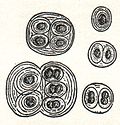 Gloeocapsa (category Cyanobacteria genera)Greek gloia (gelatinous) and the Latin capsa (case)) is a genus of cyanobacteria. The cells secrete individual gelatinous sheaths which can often be...6 KB (208 words) - 22:42, 14 October 2023
Gloeocapsa (category Cyanobacteria genera)Greek gloia (gelatinous) and the Latin capsa (case)) is a genus of cyanobacteria. The cells secrete individual gelatinous sheaths which can often be...6 KB (208 words) - 22:42, 14 October 2023 Nostocaceae (category Cyanobacteria families)The Nostocaceae are a family of cyanobacteria that forms filament-shaped colonies enclosed in mucus or a gelatinous sheath. Some genera in this family...4 KB (327 words) - 16:49, 26 October 2023
Nostocaceae (category Cyanobacteria families)The Nostocaceae are a family of cyanobacteria that forms filament-shaped colonies enclosed in mucus or a gelatinous sheath. Some genera in this family...4 KB (327 words) - 16:49, 26 October 2023 life on Earth have been dated to this era and evidence of archaea and cyanobacteria date to 3500 Mya, comparatively shortly after the Eoarchean. At that...11 KB (876 words) - 15:36, 15 March 2024
life on Earth have been dated to this era and evidence of archaea and cyanobacteria date to 3500 Mya, comparatively shortly after the Eoarchean. At that...11 KB (876 words) - 15:36, 15 March 2024 Rivulariaceae (category Cyanobacteria families)The Rivulariaceae are a family of cyanobacteria within the Nostocales in which the filaments (trichomes) are tapered from wider at the base to narrower...4 KB (358 words) - 12:42, 15 October 2021
Rivulariaceae (category Cyanobacteria families)The Rivulariaceae are a family of cyanobacteria within the Nostocales in which the filaments (trichomes) are tapered from wider at the base to narrower...4 KB (358 words) - 12:42, 15 October 2021 Cape Cod Bay is a large bay of the Atlantic Ocean adjacent to the U.S. state of Massachusetts. Measuring 604 square miles (1,560 km2) below a line drawn...15 KB (1,816 words) - 20:52, 26 April 2024
Cape Cod Bay is a large bay of the Atlantic Ocean adjacent to the U.S. state of Massachusetts. Measuring 604 square miles (1,560 km2) below a line drawn...15 KB (1,816 words) - 20:52, 26 April 2024 Genomics (section Cyanobacteria)genomes. At present there are 24 cyanobacteria for which a total genome sequence is available. 15 of these cyanobacteria come from the marine environment...78 KB (7,518 words) - 05:13, 25 April 2024
Genomics (section Cyanobacteria)genomes. At present there are 24 cyanobacteria for which a total genome sequence is available. 15 of these cyanobacteria come from the marine environment...78 KB (7,518 words) - 05:13, 25 April 2024 Luoma Lake (section Cyanobacteria Community)in Luoma Lake in 2015 to investigate the factors that influence the cyanobacteria abundance. It suggests that this abundance has a positive relationship...5 KB (472 words) - 01:54, 27 September 2023
Luoma Lake (section Cyanobacteria Community)in Luoma Lake in 2015 to investigate the factors that influence the cyanobacteria abundance. It suggests that this abundance has a positive relationship...5 KB (472 words) - 01:54, 27 September 2023 Arthrospira (category Cyanobacteria genera)Arthrospira is a genus of free-floating filamentous cyanobacteria characterized by cylindrical, multicellular trichomes in an open left-hand helix. A...21 KB (2,376 words) - 10:46, 6 March 2024
Arthrospira (category Cyanobacteria genera)Arthrospira is a genus of free-floating filamentous cyanobacteria characterized by cylindrical, multicellular trichomes in an open left-hand helix. A...21 KB (2,376 words) - 10:46, 6 March 2024- Scytovirin is a 95-amino acid antiviral protein isolated from the cyanobacteria Scytonema varium. It has been cultured in E. coli and its structure investigated...5 KB (550 words) - 18:45, 28 January 2023
- rocks and fossil evidence of colonies of cyanobacteria, photosynthesizing prokaryotic organisms. Cyanobacteria use water as a reducing agent, producing...22 KB (2,737 words) - 08:10, 19 February 2024
- Sphaerocodium (category Cyanobacteria genera)Sphaerocodium is a fossil that represents the remains of bacteria in the phylum Cyanobacteria, often called blue-green algae. The species of Sphaerocodium recorded...4 KB (316 words) - 07:32, 14 March 2023
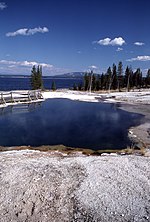 States. The pool was cool enough up until 1991 for dark orange-brown cyanobacteria to grow throughout the pool. When combined with the blue of the water...3 KB (227 words) - 03:09, 29 December 2023
States. The pool was cool enough up until 1991 for dark orange-brown cyanobacteria to grow throughout the pool. When combined with the blue of the water...3 KB (227 words) - 03:09, 29 December 2023 black and orange banded appearance, formed by biological processes of cyanobacteria (single cell photosynthetic organisms) which serve to stabilise and...9 KB (876 words) - 22:52, 11 January 2024
black and orange banded appearance, formed by biological processes of cyanobacteria (single cell photosynthetic organisms) which serve to stabilise and...9 KB (876 words) - 22:52, 11 January 2024 marine environment are produced by micro and macro algae, including cyanobacteria. Due to their antimicrobial properties they are currently the subject...31 KB (3,352 words) - 02:46, 23 April 2024
marine environment are produced by micro and macro algae, including cyanobacteria. Due to their antimicrobial properties they are currently the subject...31 KB (3,352 words) - 02:46, 23 April 2024 Planktothrix (category Cyanobacteria genera)Planktothrix is a diverse genus of filamentous cyanobacteria observed to amass in algal blooms in water ecosystems across the globe. Like all Oscillatoriales...13 KB (1,434 words) - 19:21, 22 March 2024
Planktothrix (category Cyanobacteria genera)Planktothrix is a diverse genus of filamentous cyanobacteria observed to amass in algal blooms in water ecosystems across the globe. Like all Oscillatoriales...13 KB (1,434 words) - 19:21, 22 March 2024- from Latin: bilis meaning "bile") are light-capturing bilins found in cyanobacteria and in the chloroplasts of red algae, glaucophytes and some cryptomonads...7 KB (725 words) - 05:05, 24 January 2024
 Biohydrogen (section Production by cyanobacteria)native [FeFe] hydrogenases to catalyze H2 production. Photosynthesis in cyanobacteria and green algae splits water into hydrogen ions and electrons. The electrons...23 KB (2,453 words) - 07:12, 12 April 2024
Biohydrogen (section Production by cyanobacteria)native [FeFe] hydrogenases to catalyze H2 production. Photosynthesis in cyanobacteria and green algae splits water into hydrogen ions and electrons. The electrons...23 KB (2,453 words) - 07:12, 12 April 2024- Turgor pressure (section Cyanobacteria)turgor pressure, the lower the capacity of the gas-vacuoles in different cyanobacteria. Experiments used to correlate osmosis and turgor pressure in prokaryotes...29 KB (3,566 words) - 00:41, 6 February 2024
 Calothrix (category Cyanobacteria genera)Calothrix is a genus of cyanobacteria. They are generally found in freshwater. "Calothrix". AlgaeBase. Retrieved 14 April 2018. Rippka R, Castenholz RW...2 KB (47 words) - 03:16, 17 May 2021
Calothrix (category Cyanobacteria genera)Calothrix is a genus of cyanobacteria. They are generally found in freshwater. "Calothrix". AlgaeBase. Retrieved 14 April 2018. Rippka R, Castenholz RW...2 KB (47 words) - 03:16, 17 May 2021 Microcystis aeruginosa is a species of freshwater cyanobacteria that can form harmful algal blooms of economic and ecological importance. They are the...17 KB (1,867 words) - 23:41, 2 December 2023
Microcystis aeruginosa is a species of freshwater cyanobacteria that can form harmful algal blooms of economic and ecological importance. They are the...17 KB (1,867 words) - 23:41, 2 December 2023- organelles within plant cells that may have evolved from photolithotrophic cyanobacteria-like organisms. Chemolithotrophs belong to the domains Bacteria and...31 KB (2,883 words) - 05:11, 19 February 2024
- a spectral effect called the "green window". Organisms such as some cyanobacteria and red algae contain accessory phycobiliproteins that absorb green...4 KB (514 words) - 10:02, 11 February 2024
 dissolved oxygen is beneficial to fish and can also aid in avoiding Cyanobacteria outbreaks. What is a Sump and Do You Need One for a Saltwater Aquarium...2 KB (235 words) - 04:43, 2 April 2021
dissolved oxygen is beneficial to fish and can also aid in avoiding Cyanobacteria outbreaks. What is a Sump and Do You Need One for a Saltwater Aquarium...2 KB (235 words) - 04:43, 2 April 2021 Cylindrospermum (category Cyanobacteria genera)Cylindrospermum is a genus of filamentous cyanobacteria found in terrestrial and aquatic environments. In terrestrial ecosystems, Cylindrospermum is found...2 KB (99 words) - 21:35, 29 January 2022
Cylindrospermum (category Cyanobacteria genera)Cylindrospermum is a genus of filamentous cyanobacteria found in terrestrial and aquatic environments. In terrestrial ecosystems, Cylindrospermum is found...2 KB (99 words) - 21:35, 29 January 2022- for oxygenic photosynthesis evolved in a common ancestor of extant cyanobacteria. The first appearance of free oxygen in the atmosphere is sometimes...32 KB (3,689 words) - 06:01, 25 April 2024
 Moss (section Relationship with cyanobacteria)the ecosystem due to their relationship with nitrogen-fixing cyanobacteria. Cyanobacteria colonize moss and receive shelter in return for providing fixed...61 KB (6,981 words) - 01:13, 18 April 2024
Moss (section Relationship with cyanobacteria)the ecosystem due to their relationship with nitrogen-fixing cyanobacteria. Cyanobacteria colonize moss and receive shelter in return for providing fixed...61 KB (6,981 words) - 01:13, 18 April 2024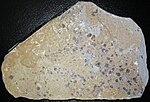 Morania (category Cyanobacteria genera)S D C P T J K Pg N Morania fragmenta fossil from Millard County, Utah Scientific classification Domain: Bacteria Phylum: Cyanobacteria Genus: Morania...3 KB (190 words) - 01:40, 21 January 2023
Morania (category Cyanobacteria genera)S D C P T J K Pg N Morania fragmenta fossil from Millard County, Utah Scientific classification Domain: Bacteria Phylum: Cyanobacteria Genus: Morania...3 KB (190 words) - 01:40, 21 January 2023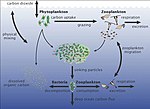 Marine microorganisms (section Cyanobacteria)algae, fungi, and plants now accepts both terms as equivalents. Cyanobacteria Cyanobacteria were the first organisms to evolve an ability to turn sunlight...232 KB (21,384 words) - 06:01, 14 April 2024
Marine microorganisms (section Cyanobacteria)algae, fungi, and plants now accepts both terms as equivalents. Cyanobacteria Cyanobacteria were the first organisms to evolve an ability to turn sunlight...232 KB (21,384 words) - 06:01, 14 April 2024- They have been reported to fix nitrogen in association with various cyanobacteria living in the roots (the "coralloid" roots). Cycads all over the world...7 KB (661 words) - 04:13, 27 April 2022
 Vesijärvi (section Cyanobacteria bloom remediation)community organization to alter ecosystem characteristics. Ecologists used cyanobacteria blooms as an alternative to using chemical treatments. Lake Vesijärvi...4 KB (306 words) - 16:03, 23 July 2023
Vesijärvi (section Cyanobacteria bloom remediation)community organization to alter ecosystem characteristics. Ecologists used cyanobacteria blooms as an alternative to using chemical treatments. Lake Vesijärvi...4 KB (306 words) - 16:03, 23 July 2023- life later in the Ediacaran and Phanerozoic. Nonetheless, prokaryotic cyanobacteria were the dominant lifeforms during this time, and likely supported an...69 KB (7,845 words) - 01:44, 17 April 2024
 Marine life (section Cyanobacteria)algae, fungi, and plants now accepts both terms as equivalents. Cyanobacteria Cyanobacteria were the first organisms to evolve an ability to turn sunlight...304 KB (29,026 words) - 22:50, 26 April 2024
Marine life (section Cyanobacteria)algae, fungi, and plants now accepts both terms as equivalents. Cyanobacteria Cyanobacteria were the first organisms to evolve an ability to turn sunlight...304 KB (29,026 words) - 22:50, 26 April 2024 non-motile, dormant cell formed by filamentous, heterocyst-forming cyanobacteria under the order Nostocales and Stigonematales. Akinetes are resistant...5 KB (500 words) - 06:25, 15 November 2023
non-motile, dormant cell formed by filamentous, heterocyst-forming cyanobacteria under the order Nostocales and Stigonematales. Akinetes are resistant...5 KB (500 words) - 06:25, 15 November 2023 Microcoleaceae (category Cyanobacteria families)The Microcoleaceae are a family of cyanobacteria. Komárek J, Kaštovský J, Mareš J, Johansen JR (2014). "Taxonomic classification of cyanoprokaryotes (cyanobacterial...2 KB (35 words) - 10:02, 31 October 2022
Microcoleaceae (category Cyanobacteria families)The Microcoleaceae are a family of cyanobacteria. Komárek J, Kaštovský J, Mareš J, Johansen JR (2014). "Taxonomic classification of cyanoprokaryotes (cyanobacterial...2 KB (35 words) - 10:02, 31 October 2022 Nostoc punctiforme (category Cyanobacteria stubs)S2CID 17609733. Meeks, JC (1998). "Symbiosis between Nitrogen-Fixing Cyanobacteria and Plants. They grow with the help of water". BioScience. 48 (4): 266–276...3 KB (261 words) - 03:10, 30 October 2023
Nostoc punctiforme (category Cyanobacteria stubs)S2CID 17609733. Meeks, JC (1998). "Symbiosis between Nitrogen-Fixing Cyanobacteria and Plants. They grow with the help of water". BioScience. 48 (4): 266–276...3 KB (261 words) - 03:10, 30 October 2023- colonized by hypoliths, and found that the communities were dominated by cyanobacteria. The rocks chosen were visually indistinguishable from those nearby...3 KB (359 words) - 11:56, 26 November 2023
 Photorespiration (section Cyanobacteria)occurs via the GS-GOGAT cycle, at a cost of one ATP and one NADPH. Cyanobacteria have three possible pathways through which they can metabolise 2-phosphoglycolate...27 KB (3,062 words) - 03:48, 9 February 2024
Photorespiration (section Cyanobacteria)occurs via the GS-GOGAT cycle, at a cost of one ATP and one NADPH. Cyanobacteria have three possible pathways through which they can metabolise 2-phosphoglycolate...27 KB (3,062 words) - 03:48, 9 February 2024- of reproduction is seen in organisms such as spirogyra, filamentous cyanobacteria, molds, lichens, sponges, acoel flatworms, some annelid worms and sea...11 KB (1,146 words) - 20:47, 27 April 2024
 intrinsic membrane proteins. Thus far, it has exclusively been found in cyanobacteria, among which it is widespread. The domain also exists on its own, in...5 KB (531 words) - 22:42, 12 August 2023
intrinsic membrane proteins. Thus far, it has exclusively been found in cyanobacteria, among which it is widespread. The domain also exists on its own, in...5 KB (531 words) - 22:42, 12 August 2023- nitrogen from the atmosphere. This process relies on the presence of cyanobacteria as a partner species within the lichen. The ability to fix nitrogen...18 KB (2,244 words) - 08:46, 27 December 2023
 Synechococcaceae (category Cyanobacteria families)The Synechococcaceae are a family of cyanobacteria. Komárek J, Kaštovský J, Mareš J, Johansen JR (2014). "Taxonomic classification of cyanoprokaryotes...2 KB (35 words) - 03:53, 24 February 2021
Synechococcaceae (category Cyanobacteria families)The Synechococcaceae are a family of cyanobacteria. Komárek J, Kaštovský J, Mareš J, Johansen JR (2014). "Taxonomic classification of cyanoprokaryotes...2 KB (35 words) - 03:53, 24 February 2021 Aphanizomenonaceae (category Cyanobacteria families)Aphanizomenonaceae are a family of cyanobacteria containing mostly genera which produce aerotopes. Cyanobacteria from the family Aphanizomenonaceae may...2 KB (59 words) - 19:23, 3 August 2021
Aphanizomenonaceae (category Cyanobacteria families)Aphanizomenonaceae are a family of cyanobacteria containing mostly genera which produce aerotopes. Cyanobacteria from the family Aphanizomenonaceae may...2 KB (59 words) - 19:23, 3 August 2021 Nephroma contain cyanobacteria (in the genus Nostoc) as a photobiont, which allows the organism to fix nitrogen. In some species the cyanobacteria is the sole...6 KB (612 words) - 03:03, 2 July 2023
Nephroma contain cyanobacteria (in the genus Nostoc) as a photobiont, which allows the organism to fix nitrogen. In some species the cyanobacteria is the sole...6 KB (612 words) - 03:03, 2 July 2023- to oxygen and light. The antenna-shaped light harvesting complex of cyanobacteria, glaucocystophyta, and red algae is known as the phycobilisome which...14 KB (1,746 words) - 14:23, 10 December 2023
 responsible for the abundant green seen in nature. Like plants, the cyanobacteria use water as an electron donor for photosynthesis and therefore liberate...4 KB (383 words) - 05:14, 27 January 2024
responsible for the abundant green seen in nature. Like plants, the cyanobacteria use water as an electron donor for photosynthesis and therefore liberate...4 KB (383 words) - 05:14, 27 January 2024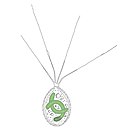 the only other known primary endosymbiosis event of photosynthetic cyanobacteria, although primary endosymbiosis with a non-photosynthetic cyanobacterial...24 KB (2,298 words) - 13:20, 24 April 2024
the only other known primary endosymbiosis event of photosynthetic cyanobacteria, although primary endosymbiosis with a non-photosynthetic cyanobacterial...24 KB (2,298 words) - 13:20, 24 April 2024- Cylindrospermopsis (category Cyanobacteria genera)Cylindrospermopsis is a planktonic genus of filamentous cyanobacteria known for its blooms in eutrophic waters. The type species is the tropical Cylindrospermopsis...978 bytes (83 words) - 07:45, 31 July 2021
- Cyanobacterium (genus) (redirect from Cyanobacterium (cyanobacteria))Cyanobacterium is a genus belonging to the phylum Cyanobacteria. Komárek J, Kaštovský J, Mareš J, Johansen JR (2014). "Taxonomic classification of cyanoprokaryotes...809 bytes (37 words) - 09:33, 11 July 2023
- that only eukaryotic cells had circadian rhythms. It is now known that cyanobacteria (a phylum of photosynthetic eubacteria) have well-documented circadian...44 KB (5,298 words) - 05:27, 25 March 2024
- Aphanothecaceae (category Cyanobacteria families)The Aphanothecaceae is a family of cyanobacteria. Komárek J, Kaštovský J, Mareš J, Johansen JR (2014). "Taxonomic classification of cyanoprokaryotes (cyanobacterial...1 KB (35 words) - 03:50, 24 February 2021
 Total Phosphorus and E. coli. A health warning was issued in 2020 for cyanobacteria. Verburg, P.; Hamill, K.; Unwin, M.; Abell, J. (August 2010). Lake water...4 KB (235 words) - 07:04, 12 April 2024
Total Phosphorus and E. coli. A health warning was issued in 2020 for cyanobacteria. Verburg, P.; Hamill, K.; Unwin, M.; Abell, J. (August 2010). Lake water...4 KB (235 words) - 07:04, 12 April 2024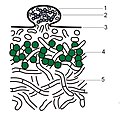 lichens, the green algae live within the lichen's medulla while the cyanobacteria are housed in specialized structures called cephalodia. These can be...9 KB (978 words) - 16:22, 27 November 2023
lichens, the green algae live within the lichen's medulla while the cyanobacteria are housed in specialized structures called cephalodia. These can be...9 KB (978 words) - 16:22, 27 November 2023- living cells. Approximately 1 billion years ago, other cells absorbed cyanobacteria that eventually became chloroplasts, organelles that produce energy...69 KB (7,722 words) - 03:21, 28 April 2024
- Spirulinaceae (category Cyanobacteria families)The Spirulinaceae is a family of cyanobacteria, the only family in the order Spirulinales. Its members are notable for having coiled trichomes. Komárek...1 KB (50 words) - 03:52, 24 February 2021
- photosynthesize via endosymbiosis with cyanobacteria, and gave rise to various algae that eventually overtook cyanobacteria as the dominant primary producers...234 KB (22,557 words) - 19:51, 28 April 2024
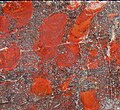 Collenia (category Cyanobacteria genera)Collenia is genus of fossil cyanobacteria that form a particular type of stromatolites. Collenia are stromatolites made up of convex layers flattened...3 KB (163 words) - 01:44, 21 January 2024
Collenia (category Cyanobacteria genera)Collenia is genus of fossil cyanobacteria that form a particular type of stromatolites. Collenia are stromatolites made up of convex layers flattened...3 KB (163 words) - 01:44, 21 January 2024- Pleurocapsales (category Cyanobacteria stubs)The Pleurocapsales are an order of coccooid cyanobacteria. Pleurocapsales are characterized by having boocytes, specialized cells where multiple fission...4 KB (353 words) - 23:34, 27 January 2023
- obsolete taxon porostromata. In 2020, the genus was assigned to the cyanobacteria order Nostocales. "Fossilworks: Hedstroemia". paleodb.org. Retrieved...3 KB (233 words) - 19:35, 4 October 2023
- phycobiliprotein, magenta chromoprotein involved in photosynthesis of some Cyanobacteria. This chromoprotein consists of alpha- and beta-subunits, generally...2 KB (198 words) - 09:35, 30 January 2023
- dioxide, using reducing equivalents from inorganic compounds. Examples: Cyanobacteria (water (H 2O) as reducing equivalent = hydrogen donor), Chlorobiaceae...47 KB (5,776 words) - 16:48, 27 April 2024
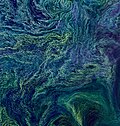 Nodularia (category Cyanobacteria genera)Nodularia is a genus of filamentous nitrogen-fixing cyanobacteria, or blue-green algae. They occur mainly in brackish or salinic waters, such as the hypersaline...2 KB (189 words) - 05:45, 24 February 2021
Nodularia (category Cyanobacteria genera)Nodularia is a genus of filamentous nitrogen-fixing cyanobacteria, or blue-green algae. They occur mainly in brackish or salinic waters, such as the hypersaline...2 KB (189 words) - 05:45, 24 February 2021- well as microbial mats in intertidal zones. Unlike plants, algae, and cyanobacteria, purple sulfur bacteria do not use water as their reducing agent, and...17 KB (2,075 words) - 17:23, 17 April 2024
 Gloeotrichia (category Cyanobacteria genera)Gloeotrichia is a large (~2 mm) colonial genus of Cyanobacteria, belonging to the order Nostocales. The name Gloeotrichia is derived from its appearance...12 KB (1,390 words) - 09:23, 15 January 2024
Gloeotrichia (category Cyanobacteria genera)Gloeotrichia is a large (~2 mm) colonial genus of Cyanobacteria, belonging to the order Nostocales. The name Gloeotrichia is derived from its appearance...12 KB (1,390 words) - 09:23, 15 January 2024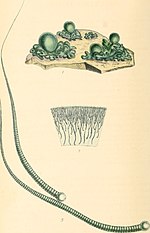 Rivularia is a genus of cyanobacteria of the family Rivulariaceae. Rivularia is found growing on submerged stones, moist rocks, and damp soils near the...5 KB (505 words) - 19:44, 27 October 2022
Rivularia is a genus of cyanobacteria of the family Rivulariaceae. Rivularia is found growing on submerged stones, moist rocks, and damp soils near the...5 KB (505 words) - 19:44, 27 October 2022 Melainabacteria is a phylum related to Cyanobacteria. Organisms belonging to this phylum have been found in the human gut and various aquatic habitats...15 KB (1,177 words) - 22:39, 3 December 2023
Melainabacteria is a phylum related to Cyanobacteria. Organisms belonging to this phylum have been found in the human gut and various aquatic habitats...15 KB (1,177 words) - 22:39, 3 December 2023- thalassa, also referred to as UCYN-A, is a diazotrophic species of cyanobacteria commonly found in measurable quantities throughout the world's oceans...23 KB (2,632 words) - 22:58, 22 April 2024
 Cyanothece (category Cyanobacteria genera)diazotrophic, oxygenic photosynthesizing cyanobacteria. In 1976, Jiří Komárek defined the prokaryotic cyanobacteria genus Cyanothece as distinct from Synechococcus...23 KB (2,459 words) - 13:13, 1 November 2023
Cyanothece (category Cyanobacteria genera)diazotrophic, oxygenic photosynthesizing cyanobacteria. In 1976, Jiří Komárek defined the prokaryotic cyanobacteria genus Cyanothece as distinct from Synechococcus...23 KB (2,459 words) - 13:13, 1 November 2023 Merismopediaceae (category Cyanobacteria families)The Merismopediaceae are a family of cyanobacteria. Komárek J, Kaštovský J, Mareš J, Johansen JR (2014). "Taxonomic classification of cyanoprokaryotes...1 KB (35 words) - 03:51, 24 February 2021
Merismopediaceae (category Cyanobacteria families)The Merismopediaceae are a family of cyanobacteria. Komárek J, Kaštovský J, Mareš J, Johansen JR (2014). "Taxonomic classification of cyanoprokaryotes...1 KB (35 words) - 03:51, 24 February 2021 cyanotoxin produced by certain cyanobacteria species. It is used as a defensive secretion to protect these cyanobacteria from predation by fish, being...4 KB (348 words) - 18:02, 4 February 2024
cyanotoxin produced by certain cyanobacteria species. It is used as a defensive secretion to protect these cyanobacteria from predation by fish, being...4 KB (348 words) - 18:02, 4 February 2024 vertebrates, invertebrates, as well as red algae, green plants and cyanobacteria. Bilins can range in color from red, orange, yellow or brown to blue...8 KB (954 words) - 21:07, 8 November 2023
vertebrates, invertebrates, as well as red algae, green plants and cyanobacteria. Bilins can range in color from red, orange, yellow or brown to blue...8 KB (954 words) - 21:07, 8 November 2023 as mosses, lichens, cyanobacteria and slime molds to restore soil nutrients, The use of engineered biocrust‐forming cyanobacteria with these traits (vs...6 KB (720 words) - 00:35, 13 March 2024
as mosses, lichens, cyanobacteria and slime molds to restore soil nutrients, The use of engineered biocrust‐forming cyanobacteria with these traits (vs...6 KB (720 words) - 00:35, 13 March 2024- natural toxin such as cyanotoxins found in shellfish or freshwater cyanobacteria crusts. Toxic encephalopathy can occur following acute or chronic exposure...16 KB (1,909 words) - 00:06, 9 April 2024
- Hapalosiphonaceae (category Cyanobacteria families)The Hapalosiphonaceae are a family of cyanobacteria. Komárek J, Kaštovský J, Mareš J, Johansen JR (2014). "Taxonomic classification of cyanoprokaryotes...2 KB (35 words) - 03:51, 24 February 2021
- and cytochromes P450. Several diterpenes are produced by plants and cyanobacteria. GGPP is also the precursor for the synthesis of the phytane by the...5 KB (463 words) - 08:11, 6 August 2023
 newly hyper-saline environment provides an ideal breeding ground for cyanobacteria; Rafts of dead seagrass floating on the surface of the water as well...16 KB (1,747 words) - 15:51, 16 April 2024
newly hyper-saline environment provides an ideal breeding ground for cyanobacteria; Rafts of dead seagrass floating on the surface of the water as well...16 KB (1,747 words) - 15:51, 16 April 2024 Merismopedia (category Cyanobacteria genera)Greek merismos [division] and the Greek pedion [plain]) is a genus of cyanobacteria found in fresh and salt water. It is ovoid or spherical in shape and...3 KB (153 words) - 05:45, 24 February 2021
Merismopedia (category Cyanobacteria genera)Greek merismos [division] and the Greek pedion [plain]) is a genus of cyanobacteria found in fresh and salt water. It is ovoid or spherical in shape and...3 KB (153 words) - 05:45, 24 February 2021- Borzia is a genus of cyanobacteria. The genus name of Borzia is in honour of Antonino Borzì (1852–1921), was an Italian botanist. It was published in...1 KB (107 words) - 23:57, 8 February 2022
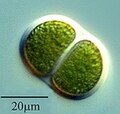 Chroococcaceae (category Cyanobacteria families)Chroococcaceae is a family of cyanobacteria. Komárek J, Kaštovský J, Mareš J, Johansen JR (2014). "Taxonomic classification of cyanoprokaryotes (cyanobacterial...2 KB (34 words) - 04:09, 25 October 2023
Chroococcaceae (category Cyanobacteria families)Chroococcaceae is a family of cyanobacteria. Komárek J, Kaštovský J, Mareš J, Johansen JR (2014). "Taxonomic classification of cyanoprokaryotes (cyanobacterial...2 KB (34 words) - 04:09, 25 October 2023- known to eat red slime algae, green film algae, hair algae, diatoms, cyanobacteria, brown film algae, detritus, and microalgae. There are several saltwater...9 KB (930 words) - 18:29, 21 August 2023
 Phytomenadione (section Plants and cyanobacteria)Phytomenadione, also known as vitamin K1 or phylloquinone, is a vitamin found in food and used as a dietary supplement. It is on the World Health Organization's...15 KB (1,288 words) - 08:10, 17 April 2024
Phytomenadione (section Plants and cyanobacteria)Phytomenadione, also known as vitamin K1 or phylloquinone, is a vitamin found in food and used as a dietary supplement. It is on the World Health Organization's...15 KB (1,288 words) - 08:10, 17 April 2024- Anabaena variabilis (category Cyanobacteria stubs)species along with many other cyanobacteria are known to form symbiotic relationships with plants. Other cyanobacteria are known to form symbiotic relationships...3 KB (328 words) - 18:17, 26 October 2023
 of Gracilicutes by Gibbons and Murray, noted above, which included cyanobacteria and did not follow the three-domain system. Also as noted above, the...14 KB (1,329 words) - 23:42, 11 April 2024
of Gracilicutes by Gibbons and Murray, noted above, which included cyanobacteria and did not follow the three-domain system. Also as noted above, the...14 KB (1,329 words) - 23:42, 11 April 2024- margins. Flamingoes frequently inhabit the saline waters feeding on cyanobacteria (Arthrospira spp. - formerly termed Spirulina) and other plankton. Lake...4 KB (331 words) - 15:53, 15 September 2022
 Geosiphon pyriforme as a multinucleate alga containing endosymbiotic cyanobacteria, although he also noted the presence of chitin, a component of fungal...7 KB (826 words) - 07:47, 13 August 2023
Geosiphon pyriforme as a multinucleate alga containing endosymbiotic cyanobacteria, although he also noted the presence of chitin, a component of fungal...7 KB (826 words) - 07:47, 13 August 2023- has been variously thought to belong to the green algae, red algae or cyanobacteria. It was originally established by the Russian paleontologist Aleksandr...8 KB (577 words) - 02:02, 15 July 2022
- 6-dienoic acid) is a non-proteinogenic amino acid found in toxins made by cyanobacteria. Toxins which include this amino acid include microcystins and nodularins...3 KB (134 words) - 06:40, 8 November 2023
- Richelia (category Cyanobacteria genera)Richelia is a genus of nitrogen-fixing, filamentous, heterocystous and cyanobacteria. It contains the single species Richelia intracellularis. They exist...25 KB (2,849 words) - 15:26, 4 March 2024
 Orange carotenoid protein (category Cyanobacteria proteins)water-soluble protein which plays a role in photoprotection in diverse cyanobacteria. It is the only photoactive protein known to use a carotenoid as the...27 KB (2,907 words) - 18:30, 28 December 2023
Orange carotenoid protein (category Cyanobacteria proteins)water-soluble protein which plays a role in photoprotection in diverse cyanobacteria. It is the only photoactive protein known to use a carotenoid as the...27 KB (2,907 words) - 18:30, 28 December 2023 Scytonemataceae (category Cyanobacteria families)The Scytonemataceae are a family of filamentous, heterocystous cyanobacteria within the order Nostocales. The family is known from freshwater, marine...2 KB (137 words) - 00:12, 14 October 2023
Scytonemataceae (category Cyanobacteria families)The Scytonemataceae are a family of filamentous, heterocystous cyanobacteria within the order Nostocales. The family is known from freshwater, marine...2 KB (137 words) - 00:12, 14 October 2023 Pseudanabaenaceae (category Cyanobacteria families)The Pseudanabaenaceae are a family of cyanobacteria. As accepted by WoRMS; Arthronema Komárek & Lukavský 1988 Halomicronema Abed, Garcia-Pichel & Hernández-Mariné...2 KB (139 words) - 22:32, 12 December 2023
Pseudanabaenaceae (category Cyanobacteria families)The Pseudanabaenaceae are a family of cyanobacteria. As accepted by WoRMS; Arthronema Komárek & Lukavský 1988 Halomicronema Abed, Garcia-Pichel & Hernández-Mariné...2 KB (139 words) - 22:32, 12 December 2023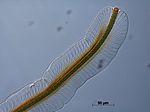 Petalonema (category Cyanobacteria genera)Petalonema is a genus of cyanobacteria. These species occur in freshwater habitats, on rocks, in soil, and as epiphytes. Species include: Petalonema alatum...1 KB (85 words) - 05:46, 24 February 2021
Petalonema (category Cyanobacteria genera)Petalonema is a genus of cyanobacteria. These species occur in freshwater habitats, on rocks, in soil, and as epiphytes. Species include: Petalonema alatum...1 KB (85 words) - 05:46, 24 February 2021- environmental conditions. Cyanobacteria are the most primitive organisms that demonstrate a circadian oscillation. Cyanobacteria clocks were first founded...25 KB (3,106 words) - 09:18, 3 April 2024
 some cyanobacteria that make their own food with photosynthesis as plants do. The red accessory photosynthesizing pigment in the cyanobacteria produces...12 KB (1,329 words) - 20:32, 26 March 2024
some cyanobacteria that make their own food with photosynthesis as plants do. The red accessory photosynthesizing pigment in the cyanobacteria produces...12 KB (1,329 words) - 20:32, 26 March 2024- do so. Instead, it forms an endocytobiotic association with Nostoc cyanobacteria. The majority of evidence shows that the Glomeromycota are dependent...19 KB (2,016 words) - 23:38, 21 November 2023
 Chroococcus (category Cyanobacteria genera)Chroococcus is a genus of cyanobacteria belonging to the family Chroococcaceae. As a result of recent genetic analyses, several new genera were erected...2 KB (108 words) - 21:30, 26 December 2023
Chroococcus (category Cyanobacteria genera)Chroococcus is a genus of cyanobacteria belonging to the family Chroococcaceae. As a result of recent genetic analyses, several new genera were erected...2 KB (108 words) - 21:30, 26 December 2023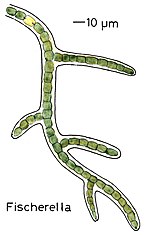 Fischerella (category Cyanobacteria genera)Fischerella is a genus of cyanobacteria belonging to the family Hapalosiphonaceae. The genus was first described by M. Gomont in 1895. The genus has cosmopolitan...2 KB (143 words) - 01:53, 6 March 2022
Fischerella (category Cyanobacteria genera)Fischerella is a genus of cyanobacteria belonging to the family Hapalosiphonaceae. The genus was first described by M. Gomont in 1895. The genus has cosmopolitan...2 KB (143 words) - 01:53, 6 March 2022 Tolypothrichaceae (category Cyanobacteria families)The Tolypothrichaceae are a family of cyanobacteria. Komárek J, Kaštovský J, Mareš J, Johansen JR (2014). "Taxonomic classification of cyanoprokaryotes...1 KB (35 words) - 18:39, 10 June 2021
Tolypothrichaceae (category Cyanobacteria families)The Tolypothrichaceae are a family of cyanobacteria. Komárek J, Kaštovský J, Mareš J, Johansen JR (2014). "Taxonomic classification of cyanoprokaryotes...1 KB (35 words) - 18:39, 10 June 2021- Aulosira (category Cyanobacteria genera)Aulosira is a genus of cyanobacteria found in a variety of environmental niches that forms colonies composed of filaments of moniliform cells. The name...2 KB (140 words) - 17:20, 9 December 2021
 food will only increase, thereby putting more pressure on farmers. Cyanobacteria, or blue-green algae, are photosynthetic bacteria. They grow in many...60 KB (7,416 words) - 14:00, 24 April 2024
food will only increase, thereby putting more pressure on farmers. Cyanobacteria, or blue-green algae, are photosynthetic bacteria. They grow in many...60 KB (7,416 words) - 14:00, 24 April 2024 a loose sense that, beyond the biological definition, also includes cyanobacteria ("blue-green algae"). An algaecide may be used for controlled bodies...6 KB (528 words) - 23:10, 8 February 2024
a loose sense that, beyond the biological definition, also includes cyanobacteria ("blue-green algae"). An algaecide may be used for controlled bodies...6 KB (528 words) - 23:10, 8 February 2024 chloroplast thylakoid or bacterial cell membrane. Plants, algae, and cyanobacteria have one type of PRC for each of its two photosystems. Non-oxygenic...18 KB (2,100 words) - 03:28, 29 January 2024
chloroplast thylakoid or bacterial cell membrane. Plants, algae, and cyanobacteria have one type of PRC for each of its two photosystems. Non-oxygenic...18 KB (2,100 words) - 03:28, 29 January 2024 Cyclamides are a class of oligopeptides produced by cyanobacteria algae strains such as Microcystis aeruginosa. Some of them can be toxic. Cyclamides...2 KB (181 words) - 07:18, 28 December 2023
Cyclamides are a class of oligopeptides produced by cyanobacteria algae strains such as Microcystis aeruginosa. Some of them can be toxic. Cyclamides...2 KB (181 words) - 07:18, 28 December 2023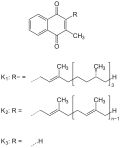 plants (including land plants and green algae) and some species of cyanobacteria, where it functions as an electron acceptor transferring one electron...69 KB (7,762 words) - 11:17, 28 April 2024
plants (including land plants and green algae) and some species of cyanobacteria, where it functions as an electron acceptor transferring one electron...69 KB (7,762 words) - 11:17, 28 April 2024- the mechanism for photokinesis appears to be an energetic process. In cyanobacteria, for example, an increase in illumination results in an increase of...4 KB (466 words) - 20:00, 31 May 2023
- Johannesbaptistia (category Cyanobacteria genera)Johannesbaptistia is a genus of brackish–freshwater cyanobacteria which has a very characteristic morphology. It is the only member of the family Cyanothrichaceae...2 KB (145 words) - 10:38, 23 February 2022
 therefore seem to have a role analogous to that of carboxysomes in cyanobacteria. Algae are restricted to aqueous environments, even in aquatic habitats...26 KB (3,307 words) - 20:35, 14 April 2024
therefore seem to have a role analogous to that of carboxysomes in cyanobacteria. Algae are restricted to aqueous environments, even in aquatic habitats...26 KB (3,307 words) - 20:35, 14 April 2024- Anabaenopsis (category Cyanobacteria genera)Anabaenopsis is a genus of filamentous, heterocystous cyanobacteria that reproduces by fragmentation and with akinetes. Anabaenopsis can produce microcystins...2 KB (85 words) - 05:44, 24 February 2021
- Gunflintia (category Cyanobacteria genera)Gunflintia is an extinct genus of cyanobacteria that once existed in what is now Canada and Australia. It was about five micrometres wide, and is known...1 KB (99 words) - 04:49, 30 July 2022
- nitrogen-fixing alphaproteobacterium Sinorhizobium meliloti, marine cyanobacteria, Francisella tularensis (the causative agent of tularaemia), Streptococcus...30 KB (3,499 words) - 11:30, 26 March 2024
- Chlorogloeopsis (category Cyanobacteria genera)Chlorogloeopsis is a genus of cyanobacteria, and is the only genus in the family Chlorogloeopsidaceae. Komárek J, Kaštovský J, Mareš J, Johansen JR (2014)...846 bytes (43 words) - 05:44, 24 February 2021
- place in the cytoplasm. Most gram-negative bacteria, the photosynthetic cyanobacteria and green algae use only the MEP pathway. Bacteria that use the MEP...16 KB (1,627 words) - 10:12, 27 March 2024
 Nostoc pruniforme (category Cyanobacteria stubs)"Effects of grazing and light on the growth of Nostoc pruniforme (Cyanobacteria)". British Phycological Journal. 23 (3): 219–227. doi:10.1080/00071618800650251...2 KB (258 words) - 03:57, 21 July 2023
Nostoc pruniforme (category Cyanobacteria stubs)"Effects of grazing and light on the growth of Nostoc pruniforme (Cyanobacteria)". British Phycological Journal. 23 (3): 219–227. doi:10.1080/00071618800650251...2 KB (258 words) - 03:57, 21 July 2023 cork taint in winemaking. MIB is produced by various blue-green algae (cyanobacteria) and filamentous bacteria in the class Actinomycetia, and also some...5 KB (436 words) - 15:27, 3 August 2023
cork taint in winemaking. MIB is produced by various blue-green algae (cyanobacteria) and filamentous bacteria in the class Actinomycetia, and also some...5 KB (436 words) - 15:27, 3 August 2023- Hyellaceae (category Cyanobacteria families)Hyellaceae is a family of cyanobacteria. The genus name of Hyella is in honour of Félix Charles Hy (1853-1918), who was a French clergyman and Botanist...2 KB (98 words) - 00:00, 17 April 2022
- Chamaesiphonaceae (category Cyanobacteria families)The Chamaesiphonaceae are a family of cyanobacteria. Komárek J, Kaštovský J, Mareš J, Johansen JR (2014). "Taxonomic classification of cyanoprokaryotes...1 KB (35 words) - 03:50, 24 February 2021
- Homoeotrichaceae (category Cyanobacteria families)The Homoeotrichaceae are a family of cyanobacteria. Komárek J, Kaštovský J, Mareš J, Johansen JR (2014). "Taxonomic classification of cyanoprokaryotes...1 KB (35 words) - 03:51, 24 February 2021
- Nostoc commune var. sphaeroides (category Cyanobacteria stubs)var. sphaeroides Scientific classification Domain: Bacteria Phylum: Cyanobacteria Class: Cyanophyceae Order: Nostocales Family: Nostocaceae Genus: Nostoc...2 KB (156 words) - 09:03, 25 February 2021
- Radaisia (category Cyanobacteria genera)Radaisia Scientific classification Domain: Bacteria Phylum: Cyanobacteria Class: Cyanophyceae Order: Pleurocapsales Family: Hyellaceae Genus: Radaisia...2 KB (191 words) - 14:41, 3 October 2022
- molecular dimer associated with photosystem II in plants, algae, and cyanobacteria, and central to oxygenic photosynthesis. Its name is derived from the...3 KB (375 words) - 22:32, 20 August 2023
 Microcystaceae (category Cyanobacteria families)Microcystaceae is family of cyanobacteria which contains the harmful algal bloom Microcystis aeruginosa. The family is characterized by single, floating...2 KB (83 words) - 03:52, 24 February 2021
Microcystaceae (category Cyanobacteria families)Microcystaceae is family of cyanobacteria which contains the harmful algal bloom Microcystis aeruginosa. The family is characterized by single, floating...2 KB (83 words) - 03:52, 24 February 2021 with various photosynthetic algal organisms such as dinoflagellates, cyanobacteria, prasinophytes or haptophytes, which may cause their distribution to...4 KB (290 words) - 16:24, 14 January 2023
with various photosynthetic algal organisms such as dinoflagellates, cyanobacteria, prasinophytes or haptophytes, which may cause their distribution to...4 KB (290 words) - 16:24, 14 January 2023 Pseudomonadota, Aquificota, Chlamydiota, Bacteroidota, Chlorobiota, "Cyanobacteria", Fibrobacterota, Verrucomicrobiota, Planctomycetota, Spirochaetota...24 KB (2,411 words) - 21:04, 11 April 2024
Pseudomonadota, Aquificota, Chlamydiota, Bacteroidota, Chlorobiota, "Cyanobacteria", Fibrobacterota, Verrucomicrobiota, Planctomycetota, Spirochaetota...24 KB (2,411 words) - 21:04, 11 April 2024- prokaryotes and mitochondria or photophosphorylation in chloroplasts and cyanobacteria by dissociating the reactions of ATP synthesis from the electron transport...5 KB (536 words) - 23:05, 8 April 2024
- Wollea (category Cyanobacteria genera)Wollea is a genus of filamentous, heterocystous cyanobacteria that form macroscopic colonies in freshwater habitats. The genus produces akinetes and is...1 KB (59 words) - 20:27, 3 April 2021
 Rhynie chert (section Cyanobacteria)whose septate pores resemble those of fungi. In the rare instances that cyanobacteria are found in the fossil record, their presence is usually the subject...31 KB (3,509 words) - 12:12, 13 December 2023
Rhynie chert (section Cyanobacteria)whose septate pores resemble those of fungi. In the rare instances that cyanobacteria are found in the fossil record, their presence is usually the subject...31 KB (3,509 words) - 12:12, 13 December 2023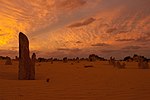 stromatolites, are structures built by micro-organisms, especially cyanobacteria. Some of the fossilized thrombolites have been dated to 3.6 billion...9 KB (809 words) - 19:45, 25 April 2024
stromatolites, are structures built by micro-organisms, especially cyanobacteria. Some of the fossilized thrombolites have been dated to 3.6 billion...9 KB (809 words) - 19:45, 25 April 2024- Gomontiellaceae (category Cyanobacteria families)The Gomontiellaceae are a family of cyanobacteria. The genus name of Gomontiella is in honour of Maurice-Augustin Gomont (1839 - 1909), who was a French...2 KB (124 words) - 10:42, 16 March 2022
 with the advent of silicifying organisms. Preserved fossils include cyanobacteria microfossils. This locality also has been claimed to contain eukaryotic...3 KB (206 words) - 00:24, 22 July 2023
with the advent of silicifying organisms. Preserved fossils include cyanobacteria microfossils. This locality also has been claimed to contain eukaryotic...3 KB (206 words) - 00:24, 22 July 2023- Prochloraceae (category Cyanobacteria families)The Prochloraceae are a family of cyanobacteria. Komárek J, Kaštovský J, Mareš J, Johansen JR (2014). "Taxonomic classification of cyanoprokaryotes (cyanobacterial...949 bytes (35 words) - 04:39, 25 October 2023
 Jimmy Orjala (2011). "Chemodiversity in Freshwater and Terrestrial Cyanobacteria – a Source for Drug Discovery". Curr Drug Targets. 12 (11): 1654–73...7 KB (695 words) - 00:14, 23 October 2023
Jimmy Orjala (2011). "Chemodiversity in Freshwater and Terrestrial Cyanobacteria – a Source for Drug Discovery". Curr Drug Targets. 12 (11): 1654–73...7 KB (695 words) - 00:14, 23 October 2023- sustained circadian rhythmicity in cyanobacteria, the kaiA gene is restricted to a group of higher-order cyanobacteria. For example, while the Synechococcus...23 KB (2,981 words) - 09:19, 3 April 2024
- Aphanocapsa (category Cyanobacteria genera)Aphanocapsa is a genus of cyanobacteria belonging to the family Merismopediaceae. The species of this genus are found in Europe, Asia (Bangladesh) and...757 bytes (44 words) - 05:30, 8 January 2023
 Entophysalidaceae (category Cyanobacteria families)Entophysalidaceae is a family of cyanobacteria. Komárek J, Kaštovský J, Mareš J, Johansen JR (2014). "Taxonomic classification of cyanoprokaryotes (cyanobacterial...2 KB (34 words) - 19:00, 13 October 2023
Entophysalidaceae (category Cyanobacteria families)Entophysalidaceae is a family of cyanobacteria. Komárek J, Kaštovský J, Mareš J, Johansen JR (2014). "Taxonomic classification of cyanoprokaryotes (cyanobacterial...2 KB (34 words) - 19:00, 13 October 2023 screen for RNAs in cyanobacteria. Further analysis has shown that the RNA is well conserved and highly expressed in cyanobacteria. and is required for...3 KB (256 words) - 04:30, 27 November 2023
screen for RNAs in cyanobacteria. Further analysis has shown that the RNA is well conserved and highly expressed in cyanobacteria. and is required for...3 KB (256 words) - 04:30, 27 November 2023- free dictionary. Spirulina may refer to: Spirulina (genus), a genus of cyanobacteria (blue-green algae) Spirulina (dietary supplement), a cyanobacterium...834 bytes (132 words) - 23:34, 1 January 2024
 Cyanobacterin is a chemical compound produced by the cyanobacteria Scytonema hofmanni. It is a photosynthesis inhibitor with algaecidal and herbicidal...2 KB (86 words) - 15:36, 2 December 2021
Cyanobacterin is a chemical compound produced by the cyanobacteria Scytonema hofmanni. It is a photosynthesis inhibitor with algaecidal and herbicidal...2 KB (86 words) - 15:36, 2 December 2021 Acaryochloris marina is a symbiotic species of the phylum Cyanobacteria that produces chlorophyll d, allowing it to use far-red light, at 770 nm wavelength...7 KB (773 words) - 18:15, 13 April 2024
Acaryochloris marina is a symbiotic species of the phylum Cyanobacteria that produces chlorophyll d, allowing it to use far-red light, at 770 nm wavelength...7 KB (773 words) - 18:15, 13 April 2024- Synechocystis sp. PCC6803 is a strain of unicellular, freshwater cyanobacteria. Synechocystis sp. PCC6803 is capable of both phototrophic growth by oxygenic...31 KB (3,535 words) - 13:59, 9 January 2024
- Coleofasciculaceae (category Cyanobacteria families)The Coleofasciculaceae are a family of cyanobacteria. Komárek J, Kaštovský J, Mareš J, Johansen JR (2014). "Taxonomic classification of cyanoprokaryotes...1 KB (35 words) - 16:05, 12 March 2024
- Gomphosphaeriaceae (category Cyanobacteria families)Gomphosphaeriaceae is a family of cyanobacteria. Komárek J, Kaštovský J, Mareš J, Johansen JR (2014). "Taxonomic classification of cyanoprokaryotes (cyanobacterial...837 bytes (34 words) - 03:51, 24 February 2021
 due to the poor quality of the water, which is also contaminated by cyanobacteria. In the winter it is used for skating. Koseze Pond is a natural habitat...9 KB (804 words) - 15:42, 8 February 2024
due to the poor quality of the water, which is also contaminated by cyanobacteria. In the winter it is used for skating. Koseze Pond is a natural habitat...9 KB (804 words) - 15:42, 8 February 2024- Gloeotrichiaceae (category Cyanobacteria families)The Gloeotrichiaceae are a family of cyanobacteria. Komárek J, Kaštovský J, Mareš J, Johansen JR (2014). "Taxonomic classification of cyanoprokaryotes...877 bytes (35 words) - 03:50, 24 February 2021
 of eutrophication. This is because levels of epithemia “containing cyanobacteria endosymbionts, decreased with increased ambient inorganic N concentrations”...2 KB (162 words) - 14:45, 2 March 2023
of eutrophication. This is because levels of epithemia “containing cyanobacteria endosymbionts, decreased with increased ambient inorganic N concentrations”...2 KB (162 words) - 14:45, 2 March 2023 ecology of Antarctic cyanobacterial microflora. A genus of Antarctic cyanobacteria, called Wilmottia was named after her in recognition of her work in...11 KB (1,041 words) - 16:06, 12 March 2024
ecology of Antarctic cyanobacterial microflora. A genus of Antarctic cyanobacteria, called Wilmottia was named after her in recognition of her work in...11 KB (1,041 words) - 16:06, 12 March 2024- Golden researched the protein makeup of the photosynthetic center in cyanobacteria, work she continued when she moved to the University of Chicago in 1983...23 KB (2,901 words) - 08:55, 25 April 2024
 Lyngbyatoxin-a is a cyanotoxin produced by certain cyanobacteria species, most notably Moorea producens (formerly Lyngbya majuscula). It is produced as...6 KB (473 words) - 05:25, 11 September 2023
Lyngbyatoxin-a is a cyanotoxin produced by certain cyanobacteria species, most notably Moorea producens (formerly Lyngbya majuscula). It is produced as...6 KB (473 words) - 05:25, 11 September 2023 blooms, along with Lake Okeechobee and the Caloosahatchee River. The cyanobacteria, or blue-green algae, causes numerous severe health consequences for...19 KB (1,693 words) - 06:38, 1 April 2024
blooms, along with Lake Okeechobee and the Caloosahatchee River. The cyanobacteria, or blue-green algae, causes numerous severe health consequences for...19 KB (1,693 words) - 06:38, 1 April 2024- Stichosiphonaceae (category Cyanobacteria families)Stichosiphonaceae is a family of cyanobacteria. Komárek J, Kaštovský J, Mareš J, Johansen JR (2014). "Taxonomic classification of cyanoprokaryotes (cyanobacterial...865 bytes (34 words) - 03:52, 24 February 2021
 (23 March 2016). "Validation of Nostoc flagelliforme (Nostocaceae, Cyanobacteria)" (PDF). Notulae Algarum (2): 1–2. ISSN 2009-8987. Retrieved 15 January...9 KB (736 words) - 14:00, 8 February 2024
(23 March 2016). "Validation of Nostoc flagelliforme (Nostocaceae, Cyanobacteria)" (PDF). Notulae Algarum (2): 1–2. ISSN 2009-8987. Retrieved 15 January...9 KB (736 words) - 14:00, 8 February 2024 which results in the characteristic green color of plants, green algae, cyanobacteria and other organisms with chlorophyllic organelles. The simplicity of...9 KB (1,052 words) - 14:37, 22 April 2024
which results in the characteristic green color of plants, green algae, cyanobacteria and other organisms with chlorophyllic organelles. The simplicity of...9 KB (1,052 words) - 14:37, 22 April 2024- Dolichospermum flosaquae is a species of cyanobacteria belonging to the family Aphanizomenonaceae. Type locality: Sweden, Denmark, Scotland, France, Germany...908 bytes (51 words) - 22:56, 21 April 2021
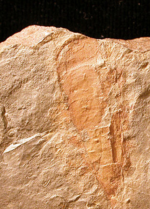 Spence Shale (section Cyanobacteria)The Spence Shale is the middle member of the Langston Formation in southeastern Idaho and northeastern Utah. It is exposed in the Bear River Range, the...6 KB (425 words) - 07:30, 14 February 2024
Spence Shale (section Cyanobacteria)The Spence Shale is the middle member of the Langston Formation in southeastern Idaho and northeastern Utah. It is exposed in the Bear River Range, the...6 KB (425 words) - 07:30, 14 February 2024 Marpolia (category Cyanobacteria stubs)This Cyanobacteria-related article is a stub. You can help Wikipedia by expanding it....3 KB (209 words) - 01:09, 15 February 2024
Marpolia (category Cyanobacteria stubs)This Cyanobacteria-related article is a stub. You can help Wikipedia by expanding it....3 KB (209 words) - 01:09, 15 February 2024 Stigonemataceae (category Cyanobacteria families)The Stigonemataceae are a family of cyanobacteria. Komárek J, Kaštovský J, Mareš J, Johansen JR (2014). "Taxonomic classification of cyanoprokaryotes...1 KB (35 words) - 04:30, 25 October 2023
Stigonemataceae (category Cyanobacteria families)The Stigonemataceae are a family of cyanobacteria. Komárek J, Kaštovský J, Mareš J, Johansen JR (2014). "Taxonomic classification of cyanoprokaryotes...1 KB (35 words) - 04:30, 25 October 2023 compound occurs in relatively few organisms, notably actinomycetota, cyanobacteria, and certain fungi. Ergothioneine was discovered by Charles Tanret in...14 KB (1,243 words) - 13:59, 1 April 2024
compound occurs in relatively few organisms, notably actinomycetota, cyanobacteria, and certain fungi. Ergothioneine was discovered by Charles Tanret in...14 KB (1,243 words) - 13:59, 1 April 2024 if a steep light gradient is present (i.e. not in open water). Some cyanobacteria (e.g. Anabaena, Synechocystis) can slowly orient along a light vector...57 KB (6,306 words) - 02:38, 1 January 2024
if a steep light gradient is present (i.e. not in open water). Some cyanobacteria (e.g. Anabaena, Synechocystis) can slowly orient along a light vector...57 KB (6,306 words) - 02:38, 1 January 2024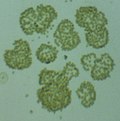 Woronichinia (category Cyanobacteria genera)Woronichinia is a genus of cyanobacteria, belonging to the family Coelosphaeriaceae. The genus was described in 1933 by Alexander Elenkin and is named...3 KB (181 words) - 19:32, 14 September 2023
Woronichinia (category Cyanobacteria genera)Woronichinia is a genus of cyanobacteria, belonging to the family Coelosphaeriaceae. The genus was described in 1933 by Alexander Elenkin and is named...3 KB (181 words) - 19:32, 14 September 2023- Leptolyngbyaceae (category Cyanobacteria families)The Leptolyngbyaceae are a family of cyanobacteria. Komárek J, Kaštovský J, Mareš J, Johansen JR (2014). "Taxonomic classification of cyanoprokaryotes...2 KB (35 words) - 03:51, 24 February 2021
- protozoa. They have even been found in bacteria, especially among the cyanobacteria (aka blue-green algae, see bacterial circadian rhythms). The best studied...4 KB (565 words) - 20:55, 11 January 2022
- Chlorogloea (category Cyanobacteria genera)Chlorogloea is a genus of cyanobacteria belonging to the family Entophysalidaceae. The genus has cosmopolitan distribution. Species: Chlorogloea conferta...825 bytes (41 words) - 20:35, 28 April 2021
- bacterium is an aquatic photosynthetic bacteria belonging to the phylum Cyanobacteria. They are composed of chained filaments known as trichomes that can...13 KB (1,586 words) - 18:59, 2 December 2023
- Cyanonephron (category Cyanobacteria genera)Cyanonephron is a genus of cyanobacteria in the family Synechococcaceae. Cyanonephron styloides gen. et sp. nov., a new chroococcal blue-green alga (Cyanophyta)...1 KB (134 words) - 05:44, 24 February 2021
 10 cm (3.9 in) a year. A health warning was issued in 2020 for cyanobacteria. Cyanobacteria killed fish and birds in 2022. The lake is now monitored by a...7 KB (482 words) - 19:14, 24 February 2024
10 cm (3.9 in) a year. A health warning was issued in 2020 for cyanobacteria. Cyanobacteria killed fish and birds in 2022. The lake is now monitored by a...7 KB (482 words) - 19:14, 24 February 2024- determined to be inaccurate for cyanobacteria; transcriptional regulation is not the central process driving cyanobacteria rhythms. Though transcriptional...22 KB (2,761 words) - 15:00, 29 April 2023
 Salt marsh (section Cyanobacteria in salt marshes)of salt marshes primarily consists of cyanobacteria, purple bacteria, and green sulfur bacteria. Cyanobacteria are important nitrogen fixers in salt marshes...83 KB (10,263 words) - 18:03, 26 April 2024
Salt marsh (section Cyanobacteria in salt marshes)of salt marshes primarily consists of cyanobacteria, purple bacteria, and green sulfur bacteria. Cyanobacteria are important nitrogen fixers in salt marshes...83 KB (10,263 words) - 18:03, 26 April 2024- Cyanobacteriochrome (category Cyanobacteria proteins)Cyanobacteriochromes are phytochrome-related photoreceptor proteins found only in the cyanobacteria. Cyanobacteriochrome covalently binds a linear tetrapyrrole molecule...3 KB (300 words) - 20:01, 11 October 2021
- Coelosphaeriaceae (category Cyanobacteria families)The Coelosphaeriaceae are a family of cyanobacteria. Komárek J, Kaštovský J, Mareš J, Johansen JR (2014). "Taxonomic classification of cyanoprokaryotes...1 KB (35 words) - 03:50, 24 February 2021
- Archaeosphaeroides (category Cyanobacteria genera)Proterozoic Archean Had. Scientific classification Domain: Bacteria Phylum: Cyanobacteria Genus: †Archaeosphaeroides J.W.Schopf & E.S.Barghoorn, 1967...1 KB (87 words) - 16:36, 17 April 2024
- (light-driven oxidation and splitting) of water during photosynthesis in cyanobacteria, green algae, and plants. During oxidative phosphorylation in cellular...11 KB (1,283 words) - 13:44, 14 February 2024
- Godleyaceae (category Cyanobacteria families)The Godleyaceae are a family of cyanobacteria. Komárek J, Kaštovský J, Mareš J, Johansen JR (2014). "Taxonomic classification of cyanoprokaryotes (cyanobacterial...890 bytes (35 words) - 03:51, 24 February 2021
 are a family of ascomycete fungi. Most species are lichenized with cyanobacteria, and have a distribution largely in temperate regions. The family was...23 KB (1,784 words) - 03:18, 19 February 2024
are a family of ascomycete fungi. Most species are lichenized with cyanobacteria, and have a distribution largely in temperate regions. The family was...23 KB (1,784 words) - 03:18, 19 February 2024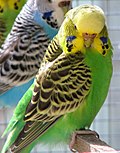 cyanobacteria. Bacteria produce pigments such as carotenoids, melanin, violacein, prodigiosin, pyocyanin, actinorhodin, and zeaxanthin. Cyanobacteria...32 KB (3,908 words) - 20:24, 18 April 2024
cyanobacteria. Bacteria produce pigments such as carotenoids, melanin, violacein, prodigiosin, pyocyanin, actinorhodin, and zeaxanthin. Cyanobacteria...32 KB (3,908 words) - 20:24, 18 April 2024- Romeriaceae (category Cyanobacteria families)The Romeriaceae are a family of cyanobacteria. Komárek J, Kaštovský J, Mareš J, Johansen JR (2014). "Taxonomic classification of cyanoprokaryotes (cyanobacterial...975 bytes (35 words) - 03:52, 24 February 2021
- by bioinformatics.wcaG RNAs are found in certain phages that infect cyanobacteria. Most known wcaG RNAs were found in sequences of DNA extracted from...3 KB (295 words) - 02:21, 28 November 2023
 The ATPC RNA motif is a conserved RNA structure found in certain cyanobacteria. It is apparently ubiquitous in Prochlorococcus marinus, and is present...2 KB (202 words) - 12:00, 17 April 2023
The ATPC RNA motif is a conserved RNA structure found in certain cyanobacteria. It is apparently ubiquitous in Prochlorococcus marinus, and is present...2 KB (202 words) - 12:00, 17 April 2023- Loefgrenia anomala (redirect from Loefgrenia (cyanobacteria))Loefgrenia is a monospecific, freshwater, epiphytic genus of nonheterocystic cyanobacteria known from Brazil. The type and only known species for the genus is...2 KB (148 words) - 15:01, 31 July 2022
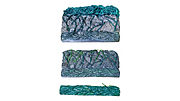 Ozarkcollenia (category Cyanobacteria genera)Ozarkcollenia is an extinct genus of stromatolite-making cyanobacteria from Missouri, United States. It was related to Collenia. Ozarkcollenia may have...2 KB (106 words) - 10:19, 7 June 2023
Ozarkcollenia (category Cyanobacteria genera)Ozarkcollenia is an extinct genus of stromatolite-making cyanobacteria from Missouri, United States. It was related to Collenia. Ozarkcollenia may have...2 KB (106 words) - 10:19, 7 June 2023- localized in the cytosol and chloroplast. Fd-GOGAT is found strictly in cyanobacteria and photosynthetic eukaryotes, and the gene is located in the chloroplast...2 KB (257 words) - 08:33, 14 August 2020
- Filipino-American microbiologist and botanist who specialized in the study of cyanobacteria and extremophiles. Her work has been cited in work exploring the terraforming...9 KB (777 words) - 00:40, 14 April 2024
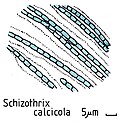 Schizotrichaceae (category Cyanobacteria families)The Schizotrichaceae are a family of cyanobacteria. Komárek J; Kaštovský J; Mareš J; Johansen JR. (2014). "Taxonomic classification of cyanoprokaryotes...962 bytes (35 words) - 21:56, 19 May 2021
Schizotrichaceae (category Cyanobacteria families)The Schizotrichaceae are a family of cyanobacteria. Komárek J; Kaštovský J; Mareš J; Johansen JR. (2014). "Taxonomic classification of cyanoprokaryotes...962 bytes (35 words) - 21:56, 19 May 2021- climate change and eutrophication of inland waters promote blooms of cyanobacteria, potentially threaten water contamination by the production of the toxic...5 KB (535 words) - 09:20, 1 January 2024
- Fortieaceae (category Cyanobacteria families)The Fortieaceae is a family of cyanobacteria. Komárek J, Kaštovský J, Mareš J, Johansen JR (2014). "Taxonomic classification of cyanoprokaryotes (cyanobacterial...1,015 bytes (35 words) - 03:50, 24 February 2021
- processes are better characterized as "photoacclimatization" processes. Cyanobacteria possess some unique strategies for photoprotection which have not been...19 KB (2,119 words) - 18:37, 24 April 2024
- From a 2010 study by the University of Maryland, photosynthesizing cyanobacteria have been shown to be a significant species in the global carbon cycle...20 KB (2,455 words) - 06:47, 1 April 2024
- Limnothrix (category Cyanobacteria genera)Limnothrix is a genus of cyanobacteria belonging to the family Pseudanabaenaceae. Species: Limnothrix amphigranulata (Goor) Meffert Limnothrix bicudoi...849 bytes (40 words) - 10:52, 19 March 2024
- both primary producers. Cyanobacteria are an important autotrophic bacteria in the water food web. Explosions of cyanobacteria known as algal blooms can...42 KB (5,228 words) - 06:38, 6 January 2024
- Trichodesmium erythraeum is a species of cyanobacteria that are unique in being visible to the naked eye. This species is also known as "sea sawdust"...4 KB (548 words) - 18:54, 12 March 2024
- been reported in many microorganisms including heterotrophic bacteria, cyanobacteria, microalgae, ascomycetous and basidiomycetous fungi, as well as some...26 KB (2,824 words) - 07:04, 27 December 2023
- Capsosiraceae (category Cyanobacteria families)The Capsosiraceae are a family of cyanobacteria. Komárek J, Kaštovský J, Mareš J, Johansen JR (2014). "Taxonomic classification of cyanoprokaryotes (cyanobacterial...961 bytes (35 words) - 03:50, 24 February 2021
 and are Late Proterozoic in age and represent stromatolite reefs of cyanobacteria, amongst these reefs were some of the oldest known shells in the fossil...17 KB (2,131 words) - 07:31, 3 March 2024
and are Late Proterozoic in age and represent stromatolite reefs of cyanobacteria, amongst these reefs were some of the oldest known shells in the fossil...17 KB (2,131 words) - 07:31, 3 March 2024- Lemmermanniella (category Cyanobacteria genera)Lemmermanniella is a genus of cyanobacteria belonging to the family Synechococcaceae. The genus name of Lemmermanniella is in honour of Ernst Johann Lemmermann...2 KB (136 words) - 11:10, 6 April 2024
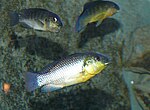 to 20 cm (7.9 in) in standard length. They mostly feed on algae and cyanobacteria, but also take other plant material, fish eggs, fry and remains, and...5 KB (454 words) - 13:51, 4 September 2021
to 20 cm (7.9 in) in standard length. They mostly feed on algae and cyanobacteria, but also take other plant material, fish eggs, fry and remains, and...5 KB (454 words) - 13:51, 4 September 2021- Cuspidothrix (category Cyanobacteria genera)Cuspidothrix is a genus of cyanobacteria belonging to the family Nostocaceae. The genus has almost cosmopolitan distribution. Species: Cuspidothrix elenkinii...1 KB (79 words) - 19:01, 3 December 2021
- Coelomoron (category Cyanobacteria genera)Coelomoron is a genus of cyanobacteria belonging to the family Merismopediaceae. The species of this genus are found in Europe. Species: Coelomoron pusillum...729 bytes (40 words) - 20:49, 28 April 2021
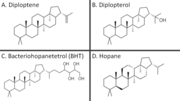 Hopanoids (section As a biomarker for cyanobacteria)alphaproteobacteria and was acquired by the cyanobacteria and acidobacteriota via horizontal gene transfer. Among cyanobacteria, hopanoid production is generally...42 KB (4,593 words) - 16:09, 31 March 2024
Hopanoids (section As a biomarker for cyanobacteria)alphaproteobacteria and was acquired by the cyanobacteria and acidobacteriota via horizontal gene transfer. Among cyanobacteria, hopanoid production is generally...42 KB (4,593 words) - 16:09, 31 March 2024- Dermocarpellaceae (category Cyanobacteria families)The Dermocarpellaceae are a family of cyanobacteria. Komárek J, Kaštovský J, Mareš J, Johansen JR (2014). "Taxonomic classification of cyanoprokaryotes...933 bytes (35 words) - 03:50, 24 February 2021
- molecular dimer associated with photosystem I in plants, algae, and cyanobacteria. Its name is derived from the word “pigment” (P) and the presence of...8 KB (931 words) - 13:46, 20 March 2024
 of plastids from cyanobacteria. Glaucophytes contain the photosynthetic pigment chlorophyll a. Along with red algae and cyanobacteria, they harvest light...10 KB (1,011 words) - 02:24, 28 March 2024
of plastids from cyanobacteria. Glaucophytes contain the photosynthetic pigment chlorophyll a. Along with red algae and cyanobacteria, they harvest light...10 KB (1,011 words) - 02:24, 28 March 2024 Gomphosphaeria (category Cyanobacteria genera)Gomphosphaeria (sometimes written Gonphosphaeria) is a genus of cyanobacteria belonging to the family Gomphosphaeriaceae. The genus was first described...1 KB (58 words) - 16:38, 20 June 2021
Gomphosphaeria (category Cyanobacteria genera)Gomphosphaeria (sometimes written Gonphosphaeria) is a genus of cyanobacteria belonging to the family Gomphosphaeriaceae. The genus was first described...1 KB (58 words) - 16:38, 20 June 2021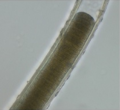 Moorea producens is a species of filamentous cyanobacteria in the genus Moorea, including tropical marine strains formerly classified as Lyngbya majuscula...5 KB (414 words) - 09:22, 22 August 2022
Moorea producens is a species of filamentous cyanobacteria in the genus Moorea, including tropical marine strains formerly classified as Lyngbya majuscula...5 KB (414 words) - 09:22, 22 August 2022- Jaaginema (category Cyanobacteria genera)Jaaginema is a genus of cyanobacteria belonging to the family Pseudanabaenaceae. The genus has cosmopolitan distribution. Species: Jaaginema angustissimum...1 KB (83 words) - 11:05, 6 April 2024
- second-generation biofuels with an emphasize on the use of algae and cyanobacteria as a source of biofuel feedstocks, have an additional advantage as they...8 KB (865 words) - 18:32, 9 February 2024
 tree species. Cyanobacteria are an example of a microorganism which widely interacts in a symbiotic manner with land plants. Cyanobacteria can enter the...74 KB (6,814 words) - 03:42, 8 April 2024
tree species. Cyanobacteria are an example of a microorganism which widely interacts in a symbiotic manner with land plants. Cyanobacteria can enter the...74 KB (6,814 words) - 03:42, 8 April 2024- Hydrococcaceae (category Cyanobacteria families)The Hydrococcaceae are a family of cyanobacteria. Komárek J, Kaštovský J, Mareš J, Johansen JR (2014). "Taxonomic classification of cyanoprokaryotes (cyanobacterial...1 KB (35 words) - 03:51, 24 February 2021
 Caldoramide is a pentapeptide isolated from the cyanobacteria Caldora penicillata. It has cytotoxic effects on cancer cells and has been the subject of...3 KB (303 words) - 20:21, 3 January 2023
Caldoramide is a pentapeptide isolated from the cyanobacteria Caldora penicillata. It has cytotoxic effects on cancer cells and has been the subject of...3 KB (303 words) - 20:21, 3 January 2023- Eucapsis (category Cyanobacteria genera)Eucapsis is a genus of cyanobacteria belonging to the family Merismopediaceae. The genus was first described by Clements and Shantz in 1909. The genus...2 KB (138 words) - 20:33, 9 February 2021
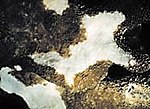 Black band disease, caused by a microbial consortium dominated by the cyanobacteria Phormidium corallyticum. Black necrosing syndrome, or dark spots disease...5 KB (566 words) - 21:39, 11 July 2023
Black band disease, caused by a microbial consortium dominated by the cyanobacteria Phormidium corallyticum. Black necrosing syndrome, or dark spots disease...5 KB (566 words) - 21:39, 11 July 2023- Heteroleibleiniaceae (category Cyanobacteria families)The Heteroleibleiniaceae are a family of cyanobacteria. Komárek J, Kaštovský J, Mareš J, Johansen JR (2014). "Taxonomic classification of cyanoprokaryotes...884 bytes (35 words) - 03:51, 24 February 2021
 of nitrogen. It forms a symbiotic relationship with nitrogen-fixing cyanobacteria, which live in specialized roots called coralloid roots and are green...16 KB (1,706 words) - 23:55, 18 April 2024
of nitrogen. It forms a symbiotic relationship with nitrogen-fixing cyanobacteria, which live in specialized roots called coralloid roots and are green...16 KB (1,706 words) - 23:55, 18 April 2024 Dolichospermum (category Cyanobacteria genera)Dolichospermum is a genus of cyanobacteria belonging to the family Nostocaceae. The genus has cosmopolitan distribution. As accepted by the GIF: Dolichospermum...3 KB (278 words) - 11:37, 12 June 2022
Dolichospermum (category Cyanobacteria genera)Dolichospermum is a genus of cyanobacteria belonging to the family Nostocaceae. The genus has cosmopolitan distribution. As accepted by the GIF: Dolichospermum...3 KB (278 words) - 11:37, 12 June 2022 Coelosphaerium (category Cyanobacteria genera)Coelosphaerium is a genus of cyanobacteria belonging to the family Merismopediaceae. The species of this genus are found in Europe, America and Australia...1 KB (71 words) - 18:40, 19 May 2021
Coelosphaerium (category Cyanobacteria genera)Coelosphaerium is a genus of cyanobacteria belonging to the family Merismopediaceae. The species of this genus are found in Europe, America and Australia...1 KB (71 words) - 18:40, 19 May 2021 mosses, lichens, and mats of green algae and red, orange, and black cyanobacteria near lakes and ephemeral streams. Living among the mats are bacteria...22 KB (2,082 words) - 09:19, 6 February 2024
mosses, lichens, and mats of green algae and red, orange, and black cyanobacteria near lakes and ephemeral streams. Living among the mats are bacteria...22 KB (2,082 words) - 09:19, 6 February 2024 Leptolyngbya (category Cyanobacteria genera)Leptolyngbya is a genus of cyanobacteria belonging to the family Leptolyngbyaceae. The genus has cosmopolitan distribution. Due to the high carbon storage...3 KB (281 words) - 06:04, 11 August 2023
Leptolyngbya (category Cyanobacteria genera)Leptolyngbya is a genus of cyanobacteria belonging to the family Leptolyngbyaceae. The genus has cosmopolitan distribution. Due to the high carbon storage...3 KB (281 words) - 06:04, 11 August 2023- Homoeothrix is a genus of cyanobacteria. "Homoeothrix (Thuret ex Bornet & Flahault) Kirchner, 1898, nom. Cons. :: Algaebase". "Homoeothrix | CyanoDB.cz...1,009 bytes (39 words) - 01:48, 4 April 2022
 Chamaesiphon (category Cyanobacteria genera)Chamaesiphon is a genus of cyanobacteria belonging to the family Chamaesiphonaceae. The genus has cosmopolitan distribution. Species: Chamaesiphon amethystinus...972 bytes (43 words) - 18:38, 24 May 2021
Chamaesiphon (category Cyanobacteria genera)Chamaesiphon is a genus of cyanobacteria belonging to the family Chamaesiphonaceae. The genus has cosmopolitan distribution. Species: Chamaesiphon amethystinus...972 bytes (43 words) - 18:38, 24 May 2021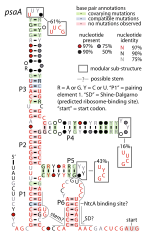 in cyanobacteria, which is consistent with their association with photosynthesis. psaAB genes are known to be regulated in species of cyanobacteria that...4 KB (431 words) - 08:27, 3 December 2023
in cyanobacteria, which is consistent with their association with photosynthesis. psaAB genes are known to be regulated in species of cyanobacteria that...4 KB (431 words) - 08:27, 3 December 2023- known for her work on desert cyanobacteria of the genus Chroococcidiopsis. Daniela Billi showed that desert cyanobacteria from the genus Chroococcidiopsis...5 KB (512 words) - 22:52, 7 March 2024
- Symphyonemataceae (category Cyanobacteria families)The Symphyonemataceae is a family of cyanobacteria. Komárek J, Kaštovský J, Mareš J, Johansen JR (2014). "Taxonomic classification of cyanoprokaryotes...2 KB (60 words) - 03:53, 24 February 2021
- 000 publicly available strains of bacteria including mycobacteria and cyanobacteria, filamentous fungi, yeasts, diatoms and plasmids. BCCM is embedded in...8 KB (783 words) - 03:43, 31 December 2023
- Gloeocapsopsis (category Cyanobacteria genera)Gloeocapsopsis is a genus of cyanobacteria belonging to the family Chroococcaceae. The genus was first described by Geitler ex J. Komárek in 1993. The...1,021 bytes (58 words) - 16:33, 20 June 2021
- "Eudoremicrobiia" "Xenobiia" "Eremiobacteria" Cyanoprokaryota Cyanobacteriota Cyanobacteria "Sericytochromatia" "Vampirovibrionophyceae" "Margulisiibacteriota"...905 bytes (89 words) - 22:27, 2 December 2023
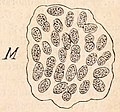 Aphanothece (category Cyanobacteria genera)nutrients in the summer and winter months. Aphanothece is a genus of cyanobacteria with complex taxonomy. Previously, the genus was only delineated morphologically...8 KB (900 words) - 19:28, 18 January 2024
Aphanothece (category Cyanobacteria genera)nutrients in the summer and winter months. Aphanothece is a genus of cyanobacteria with complex taxonomy. Previously, the genus was only delineated morphologically...8 KB (900 words) - 19:28, 18 January 2024- Komvophoron (category Cyanobacteria genera)Komvophoron is a genus of cyanobacteria belonging to the family Borziaceae. The genus has almost cosmopolitan distribution. Species: Komvophoron epiphyticum...988 bytes (53 words) - 11:11, 6 April 2024
- free oxygen which was bound up in compounds). These simple organisms, cyanobacteria ruled the still cooling earth for approximately a billion years and...8 KB (538 words) - 15:10, 22 March 2024
- Geitlerinema (category Cyanobacteria genera)Geitlerinema is a genus of cyanobacteria belonging to the family Coleofasciculaceae. The genus was first described by K. Anagnostidis in 1989. The genus...2 KB (115 words) - 10:44, 12 March 2022
- different from the anatomy and physiology of the fungus and/or algae and/or cyanobacteria that make up the lichen when growing apart from the lichen, either naturally...13 KB (1,577 words) - 02:51, 12 January 2023
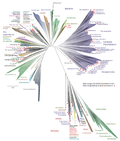 The proposed superphylum, Terrabacteria, includes Actinomycetota, "Cyanobacteria"/"Melainabacteria"-group, Deinococcota, Chloroflexota, Bacillota, and...65 KB (5,267 words) - 23:26, 27 February 2024
The proposed superphylum, Terrabacteria, includes Actinomycetota, "Cyanobacteria"/"Melainabacteria"-group, Deinococcota, Chloroflexota, Bacillota, and...65 KB (5,267 words) - 23:26, 27 February 2024- sulfur bacteria (GSB) and purple sulfur bacteria (PSB). However, some Cyanobacteria are also able to use hydrogen sulfide as an electron donor during anoxygenic...14 KB (1,514 words) - 16:25, 27 November 2023
- Arthrospira ardissonei (category Cyanobacteria stubs)Spirulina ardissoni is a cyanobacteria from the family Microcoleaceae. Guiry MD, Guiry GM (eds.). "Arthrospira ardissonei Forti, 1907". AlgaeBase. National...848 bytes (47 words) - 20:08, 15 September 2022
- "Eudoremicrobiia" "Xenobiia" "Eremiobacteria" Cyanoprokaryota Cyanobacteriota Cyanobacteria "Sericytochromatia" "Vampirovibrionophyceae" "Margulisiibacteriota"...2 KB (130 words) - 15:18, 12 April 2024
 some eukaryotes that already contained mitochondria also engulfed cyanobacteria-like organisms, leading to the formation of chloroplasts in algae and...143 KB (15,517 words) - 23:18, 22 April 2024
some eukaryotes that already contained mitochondria also engulfed cyanobacteria-like organisms, leading to the formation of chloroplasts in algae and...143 KB (15,517 words) - 23:18, 22 April 2024- "Eudoremicrobiia" "Xenobiia" "Eremiobacteria" Cyanoprokaryota Cyanobacteriota Cyanobacteria "Sericytochromatia" "Vampirovibrionophyceae" "Margulisiibacteriota"...3 KB (162 words) - 08:01, 4 January 2024
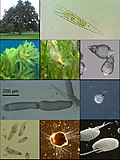 the species engaging in photosynthesis, except for the Euglenozoa and Cyanobacteria. It includes all Bikonts that are not excavates and Hemimastigophora...8 KB (691 words) - 20:26, 2 March 2024
the species engaging in photosynthesis, except for the Euglenozoa and Cyanobacteria. It includes all Bikonts that are not excavates and Hemimastigophora...8 KB (691 words) - 20:26, 2 March 2024- Xenococcaceae (category Cyanobacteria families)The Xenococcaceae are a family of cyanobacteria. Komárek J, Kaštovský J, Mareš J, Johansen JR (2014). "Taxonomic classification of cyanoprokaryotes (cyanobacterial...849 bytes (35 words) - 04:12, 8 September 2023
 fish live in Lake Vanda or the Onyx River, microscopic life, such as cyanobacteria algal blooms, have been recorded. Due to the concerns over impact to...7 KB (673 words) - 07:44, 9 May 2023
fish live in Lake Vanda or the Onyx River, microscopic life, such as cyanobacteria algal blooms, have been recorded. Due to the concerns over impact to...7 KB (673 words) - 07:44, 9 May 2023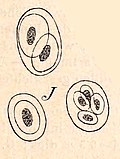 Gloeothece (category Cyanobacteria genera)Gloeothece is a genus of cyanobacteria belonging to the family Aphanothecaceae. The genus was first described by Carl Nägeli in 1849. The genus has cosmopolitan...1 KB (60 words) - 16:36, 20 June 2021
Gloeothece (category Cyanobacteria genera)Gloeothece is a genus of cyanobacteria belonging to the family Aphanothecaceae. The genus was first described by Carl Nägeli in 1849. The genus has cosmopolitan...1 KB (60 words) - 16:36, 20 June 2021- (2012) For the discovery and characterization of planktonic marine cyanobacteria, and viruses that infect them, setting in motion a paradigm shift in...4 KB (487 words) - 03:58, 13 September 2021
- of the needs of the other. A lichen consists of fungi and algae or cyanobacteria, with a bacterial microbiome; together, they are able to flourish as...22 KB (2,020 words) - 14:45, 29 April 2024
- Heteroleibleinia (category Cyanobacteria genera)Heteroleibleinia Scientific classification Domain: Bacteria Phylum: Cyanobacteria Class: Cyanophyceae Order: Synechococcales Family: Pseudanabaenaceae...1 KB (73 words) - 11:04, 6 April 2024
- Cyanodictyon (category Cyanobacteria genera)Cyanodictyon is a genus of cyanobacteria belonging to the family Synechococcaceae. The species of this genus are found in Europe. Species: Cyanodictyon...1 KB (67 words) - 13:19, 18 October 2022
 in eastern Eurasia. In addition to green algae, the lichen contains cyanobacteria that help contribute to soil fertility by supplying fixed nitrogen....18 KB (1,726 words) - 01:59, 27 April 2024
in eastern Eurasia. In addition to green algae, the lichen contains cyanobacteria that help contribute to soil fertility by supplying fixed nitrogen....18 KB (1,726 words) - 01:59, 27 April 2024 of oxygenic photosynthesis, from vascular plants to cyanobacteria. In both plants and cyanobacteria, blue light causes photoinhibition more efficiently...31 KB (3,786 words) - 10:44, 3 December 2023
of oxygenic photosynthesis, from vascular plants to cyanobacteria. In both plants and cyanobacteria, blue light causes photoinhibition more efficiently...31 KB (3,786 words) - 10:44, 3 December 2023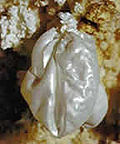 southern Turkey are made of hydromagnesite precipitated by diatoms and cyanobacteria. Microbial deposition of hydromagnesite is also reported from playas...9 KB (781 words) - 17:28, 21 February 2023
southern Turkey are made of hydromagnesite precipitated by diatoms and cyanobacteria. Microbial deposition of hydromagnesite is also reported from playas...9 KB (781 words) - 17:28, 21 February 2023- Cylindrospermopsin, a cyanotoxin produced by a variety of freshwater cyanobacteria Leung Chun-ying, Chinese politician from Hong Kong Communist Youth League...369 bytes (74 words) - 03:22, 14 April 2022
 Nostoc verrucosum (category Cyanobacteria stubs)Nostoc verrucosum is a species of cyanobacteria usually found in colonies and in globose racks. It has a greenish to blackish color. It grows in creek...2 KB (220 words) - 14:57, 6 January 2022
Nostoc verrucosum (category Cyanobacteria stubs)Nostoc verrucosum is a species of cyanobacteria usually found in colonies and in globose racks. It has a greenish to blackish color. It grows in creek...2 KB (220 words) - 14:57, 6 January 2022- Phylogenetic analyses of GltS genes suggest that their presence in cyanobacteria can be attributed to at least two horizontal gene transfer events. Szvetnik...4 KB (348 words) - 02:17, 29 November 2023
- K (1999). "Toxins produced by cyanobacteria". Vesitalous. 5: 11–18. Scottish Government Blue-Green Algae (Cyanobacteria) in Inland Waters: Assessment...89 KB (9,712 words) - 06:41, 8 March 2024
 University that Kondo began his research on the circadian clock of cyanobacteria. Kondo returned to Nagoya University as a professor at the Graduate...8 KB (752 words) - 12:23, 22 November 2023
University that Kondo began his research on the circadian clock of cyanobacteria. Kondo returned to Nagoya University as a professor at the Graduate...8 KB (752 words) - 12:23, 22 November 2023 or more photosynthetic partners, which can be either green algae or cyanobacteria, and, in at least 52 genera of lichens, a yeast. In American English...87 KB (6,586 words) - 06:38, 13 April 2024
or more photosynthetic partners, which can be either green algae or cyanobacteria, and, in at least 52 genera of lichens, a yeast. In American English...87 KB (6,586 words) - 06:38, 13 April 2024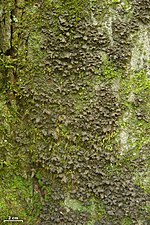 leafy appearance, and are colored brown or black. Sticta species with cyanobacteria as photobionts can fix nitrogen from the atmosphere, and due to their...24 KB (2,050 words) - 03:48, 25 April 2024
leafy appearance, and are colored brown or black. Sticta species with cyanobacteria as photobionts can fix nitrogen from the atmosphere, and due to their...24 KB (2,050 words) - 03:48, 25 April 2024- Hydrocoryne (alga) (category Cyanobacteria genera)Hydrocoryne is a genus of cyanobacteria belonging to the family Nostocaceae. Species: Hydrocoryne spongiosa Schwabe ex Bornet & Flahault "Hydrocoryne...676 bytes (32 words) - 11:05, 6 April 2024
- He also had a longstanding interest in light-harvesting complexes in cyanobacteria and red algae called phycobilisomes. He had also spent more than 10...14 KB (1,757 words) - 17:15, 8 July 2023
- January. There is one generation per year. The larvae feed on species of cyanobacteria. Intriguing female behaviour has been observed recently, possibly related...2 KB (178 words) - 06:16, 10 April 2024
- Calothrix crustacea (category Cyanobacteria stubs)Calothrix crustacea is a species of cyanobacteria that is widespread in oceans worldwide. Unusually for bacteria, the filaments of this species have an...2 KB (143 words) - 23:45, 18 January 2024
- ongoing debate regarding which kind of type is more useful in a case like cyanobacteria. A more radical approach was made in 1997 when the IUBS/IUMS International...26 KB (2,534 words) - 17:45, 11 March 2024
- colour. Another phylum with the same root is Chlorobiota, whereas "Cyanobacteria" has the root cyanos (κύανος), meaning "blue-green." Unlike some other...38 KB (2,640 words) - 04:50, 23 February 2024
- "Eudoremicrobiia" "Xenobiia" "Eremiobacteria" Cyanoprokaryota Cyanobacteriota Cyanobacteria "Sericytochromatia" "Vampirovibrionophyceae" "Margulisiibacteriota"...2 KB (155 words) - 15:44, 14 December 2023
- Anathece (category Cyanobacteria genera)Anathece is a genus of cyanobacteria belonging to the family Synechococcaceae. The genus was first described by Komárek and Anagnostidis in 2011 as Aphanothece...1 KB (69 words) - 16:28, 20 June 2021
- plants (Tracheophyta). But also form free living endocyte symbioses with cyanobacteria. The free living forms may have a Precambrian fossil record back 2.2...3 KB (198 words) - 14:16, 7 March 2024
- "Eudoremicrobiia" "Xenobiia" "Eremiobacteria" Cyanoprokaryota Cyanobacteriota Cyanobacteria "Sericytochromatia" "Vampirovibrionophyceae" "Margulisiibacteriota"...1 KB (79 words) - 18:15, 27 December 2023
- species of bacteria. A number of cyanobacteria are halotolerant; an example location of occurrence for such cyanobacteria is in the Makgadikgadi Pans, a...8 KB (1,022 words) - 23:20, 25 November 2023
- Roseofilum reptotaenium (category Cyanobacteria stubs)reptotaenium, also called coral killer, is a filamentous species of cyanobacteria. It is the pathogenic agent responsible for black band disease on Siderastrea...2 KB (232 words) - 17:46, 21 April 2024
- of Chloroflexia relative to other photosynthetic groups such as the Cyanobacteria. Chloroflexia shares a number of CSIs with Chlorobiota in the chlorophyll-synthesizing...19 KB (1,615 words) - 16:12, 13 February 2024
- Scytonema varium (category Cyanobacteria stubs)Scytonema varium Scientific classification Domain: Bacteria Phylum: Cyanobacteria Class: Cyanophyceae Order: Nostocales Family: Scytonemataceae Genus:...3 KB (251 words) - 21:25, 20 November 2023
- "Eudoremicrobiia" "Xenobiia" "Eremiobacteria" Cyanoprokaryota Cyanobacteriota Cyanobacteria "Sericytochromatia" "Vampirovibrionophyceae" "Margulisiibacteriota"...4 KB (215 words) - 17:43, 25 December 2023
- Cylindrospermopsin, a cyanotoxin produced by a variety of freshwater cyanobacteria Spanish initialism for Castile and León, an autonomous community of...482 bytes (81 words) - 01:50, 1 April 2022
 Cyanobacteria. When temperature, light and nutrient availability are adequate to phytoplankton growth, surface waters may host algae or cyanobacteria...13 KB (1,499 words) - 22:20, 21 April 2024
Cyanobacteria. When temperature, light and nutrient availability are adequate to phytoplankton growth, surface waters may host algae or cyanobacteria...13 KB (1,499 words) - 22:20, 21 April 2024- Crinalium epipsammum (category Cyanobacteria stubs)Crinalium epipsammum Scientific classification Domain: Bacteria Phylum: Cyanobacteria Class: Cyanophyceae Order: Oscillatoriales Family: Gomontiellaceae Genus:...1 KB (139 words) - 14:23, 24 February 2021
 that is used for nitrogen storage by cyanobacteria and other select eubacteria. Approximately 90% of cyanobacteria are diazotrophic, meaning that they...6 KB (648 words) - 23:55, 6 April 2024
that is used for nitrogen storage by cyanobacteria and other select eubacteria. Approximately 90% of cyanobacteria are diazotrophic, meaning that they...6 KB (648 words) - 23:55, 6 April 2024- "Eudoremicrobiia" "Xenobiia" "Eremiobacteria" Cyanoprokaryota Cyanobacteriota Cyanobacteria "Sericytochromatia" "Vampirovibrionophyceae" "Margulisiibacteriota"...5 KB (263 words) - 15:12, 25 December 2023
- Chaetosphaeridium globosum. Chloroplasts are known to be captured (symbiotic) cyanobacteria with their own genome. Part of this genome has been transferred to the...3 KB (400 words) - 18:25, 18 February 2022
- ⇌{\displaystyle \rightleftharpoons } L-ornithine + 2NH3 + CO2 was identified in cyanobacteria which should be named as arginine dihydrolase. As of late 2007, 7 structures...4 KB (403 words) - 13:12, 26 August 2023
 1.18.6.1EC 1.19.6.1) that are produced by certain bacteria, such as cyanobacteria (blue-green bacteria) and rhizobacteria. These enzymes are responsible...42 KB (4,796 words) - 20:17, 10 April 2024
1.18.6.1EC 1.19.6.1) that are produced by certain bacteria, such as cyanobacteria (blue-green bacteria) and rhizobacteria. These enzymes are responsible...42 KB (4,796 words) - 20:17, 10 April 2024- tuber and coralloid roots that rise up above the ground containing cyanobacteria. These exist in a symbiotic relationship with the cycad by nitrogen...5 KB (408 words) - 19:12, 19 January 2022
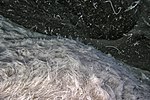 originally described as a type of blue-green algae (today known as Cyanobacteria) by the botanist Vittore Trevisan in 1842, who named it in honor of...39 KB (4,879 words) - 01:32, 23 April 2024
originally described as a type of blue-green algae (today known as Cyanobacteria) by the botanist Vittore Trevisan in 1842, who named it in honor of...39 KB (4,879 words) - 01:32, 23 April 2024- "Eudoremicrobiia" "Xenobiia" "Eremiobacteria" Cyanoprokaryota Cyanobacteriota Cyanobacteria "Sericytochromatia" "Vampirovibrionophyceae" "Margulisiibacteriota"...2 KB (162 words) - 23:23, 19 March 2022
 Prize. Doolittle has made significant contributions to the study of cyanobacteria. He found evidence for the endosymbiont origins of chloroplasts, and...8 KB (682 words) - 14:32, 21 April 2024
Prize. Doolittle has made significant contributions to the study of cyanobacteria. He found evidence for the endosymbiont origins of chloroplasts, and...8 KB (682 words) - 14:32, 21 April 2024 ingested the seeds of plants growing amongst the cyanobacteria. She suggests that the use of cyanobacteria in fertiliser production may even be linked to...17 KB (1,535 words) - 06:46, 10 April 2024
ingested the seeds of plants growing amongst the cyanobacteria. She suggests that the use of cyanobacteria in fertiliser production may even be linked to...17 KB (1,535 words) - 06:46, 10 April 2024- "Eudoremicrobiia" "Xenobiia" "Eremiobacteria" Cyanoprokaryota Cyanobacteriota Cyanobacteria "Sericytochromatia" "Vampirovibrionophyceae" "Margulisiibacteriota"...2 KB (116 words) - 15:22, 14 December 2023
 velvet. It is able to fix nitrogen from the air by means of symbiotic cyanobacteria. It can survive winter water temperatures of 5 °C (41 °F), with optimum...6 KB (474 words) - 21:41, 6 January 2024
velvet. It is able to fix nitrogen from the air by means of symbiotic cyanobacteria. It can survive winter water temperatures of 5 °C (41 °F), with optimum...6 KB (474 words) - 21:41, 6 January 2024- Prokaryotes show a great diversity of nutritional categories. For example, cyanobacteria and many purple sulfur bacteria can be photolithoautotrophic, using...19 KB (1,616 words) - 12:21, 22 January 2024
- Aphanizomenon ovalisporum (category Cyanobacteria stubs)Aphanizomenon ovalisporum is a filamentous cyanobacteria present in many algal blooms. Aphanizomenon ovalisporum is a filamentous gram negative bacterium...4 KB (411 words) - 19:23, 17 August 2023
- "Eudoremicrobiia" "Xenobiia" "Eremiobacteria" Cyanoprokaryota Cyanobacteriota Cyanobacteria "Sericytochromatia" "Vampirovibrionophyceae" "Margulisiibacteriota"...5 KB (200 words) - 11:08, 6 April 2024
- "Eudoremicrobiia" "Xenobiia" "Eremiobacteria" Cyanoprokaryota Cyanobacteriota Cyanobacteria "Sericytochromatia" "Vampirovibrionophyceae" "Margulisiibacteriota"...7 KB (323 words) - 01:20, 27 December 2023
 are among the largest cyanobacterial mass occurrences in the world. Cyanobacteria are composed of many toxic substances, most notably of microcystins...25 KB (2,829 words) - 21:55, 29 January 2023
are among the largest cyanobacterial mass occurrences in the world. Cyanobacteria are composed of many toxic substances, most notably of microcystins...25 KB (2,829 words) - 21:55, 29 January 2023- Kamptonema (category Cyanobacteria genera)Kamptonema is a genus of cyanobacteria belonging to the family Microcoleaceae. The genus was first described by O. Strunecký, J. Komárek and J. Smarda...934 bytes (57 words) - 12:12, 20 May 2022
 high aquatic biodiversity, but there are occasional blooms of toxic cyanobacteria after prolonged periods of low flow during hot, dry weather.[citation...6 KB (631 words) - 02:46, 13 April 2024
high aquatic biodiversity, but there are occasional blooms of toxic cyanobacteria after prolonged periods of low flow during hot, dry weather.[citation...6 KB (631 words) - 02:46, 13 April 2024- Phormidium aerugineo-caeruleum (category Cyanobacteria stubs)Phormidium aerugineo-caeruleum is a species of cyanobacteria in the genus Phormidium. "Phormidium aerugineo-caeruleum (Gomont) Anagn. & Komárek". Global...572 bytes (29 words) - 22:04, 18 January 2022
- Oscillatoria limnetica (category Cyanobacteria stubs)Oscillatoria limnetica is a species of freshwater cyanobacteria in the genus Oscillatoria. It is a facultative anaerobic organism, so it uses hydrogen...3 KB (249 words) - 03:35, 2 March 2023
- "Eudoremicrobiia" "Xenobiia" "Eremiobacteria" Cyanoprokaryota Cyanobacteriota Cyanobacteria "Sericytochromatia" "Vampirovibrionophyceae" "Margulisiibacteriota"...7 KB (429 words) - 13:59, 28 April 2024
- "Eudoremicrobiia" "Xenobiia" "Eremiobacteria" Cyanoprokaryota Cyanobacteriota Cyanobacteria "Sericytochromatia" "Vampirovibrionophyceae" "Margulisiibacteriota"...4 KB (214 words) - 22:27, 27 December 2023
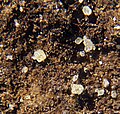 The otherwise unstable polymorph was produced and stabilized within a cyanobacteria dominated layer. Warr, L.N. (2021). "IMA–CNMNC approved mineral symbols"...3 KB (161 words) - 23:35, 15 June 2023
The otherwise unstable polymorph was produced and stabilized within a cyanobacteria dominated layer. Warr, L.N. (2021). "IMA–CNMNC approved mineral symbols"...3 KB (161 words) - 23:35, 15 June 2023- "Eudoremicrobiia" "Xenobiia" "Eremiobacteria" Cyanoprokaryota Cyanobacteriota Cyanobacteria "Sericytochromatia" "Vampirovibrionophyceae" "Margulisiibacteriota"...4 KB (298 words) - 06:13, 6 January 2024
- of two genera of organisms and may refer to: Rivularia (cyanobacteria), a genus of cyanobacteria in the family Rivulariaceae Rivularia (gastropod), a genus...345 bytes (67 words) - 20:57, 15 September 2021
- upper-crust. However, in the late 1990s, the water was polluted with cyanobacteria. This is still the case with the boating lake in the nearby Bois de...3 KB (287 words) - 21:32, 28 December 2023
- floridana reported that the increased presence of cyanobacteria in its diet slowed its growth. Cyanobacteria blooms are becoming more common in Florida springs...10 KB (668 words) - 20:30, 1 December 2023
- Chloroplast Sensor Kinase (CSK) is a protein in chloroplasts and cyanobacteria, bacteria from which chloroplasts evolved by endosymbiosis. It is part...3 KB (399 words) - 11:52, 4 April 2024
- "Eudoremicrobiia" "Xenobiia" "Eremiobacteria" Cyanoprokaryota Cyanobacteriota Cyanobacteria "Sericytochromatia" "Vampirovibrionophyceae" "Margulisiibacteriota"...7 KB (334 words) - 16:42, 27 December 2023
- Cyanonephron elegans (category Cyanobacteria stubs)Cyanonephron elegans is a freshwater species of cyanobacteria in the family Synechococcaceae. It is described in the Netherlands, Siberia, Russia and...2 KB (194 words) - 21:09, 17 January 2020
- "Eudoremicrobiia" "Xenobiia" "Eremiobacteria" Cyanoprokaryota Cyanobacteriota Cyanobacteria "Sericytochromatia" "Vampirovibrionophyceae" "Margulisiibacteriota"...5 KB (189 words) - 21:18, 4 April 2024
- Spirulina magnifica (category Cyanobacteria stubs)Spirulina magnifica is a cyanobacteria from the genus Spirulina which occur in freshwater. "WoRMS - World Register of Marine Species - Spirulina magnifica...2 KB (84 words) - 19:09, 15 June 2022
- two generations per year. The larvae feed on tree lichens and algae (cyanobacteria). Wikimedia Commons has media related to Teriomima zuluana. Wikispecies...1 KB (150 words) - 23:55, 7 December 2023
- Jakutophyton (category Cyanobacteria genera)Jakutophyton is an extinct genus of stromatolite-making cyanobacteria. Gallet, Yves; Pavlov, Vladimir; Halverson, Galen; Hulot, Gauthier (2012). "Toward...1,013 bytes (62 words) - 04:19, 2 September 2023
- found in South-East Asia Microcystis viridis, a species of freshwater cyanobacteria observed in Europe and Australia Monachanthus viridis, an obsolete synonym...2 KB (239 words) - 01:33, 29 April 2013
- was also honoured in 1942, in Lemmermanniella, which is a genus of cyanobacteria belonging to the family Synechococcaceae, and Lemmermannia which is...4 KB (338 words) - 06:01, 26 April 2023
- brain and spinal cord. A neurotoxin called aetokthonotoxin produced by cyanobacteria causes the disease. Clinical signs have been recorded from research...7 KB (828 words) - 19:54, 4 January 2024
- Oscillatoria willei (category Cyanobacteria stubs)Oscillatoria willei Scientific classification Domain: Bacteria Phylum: Cyanobacteria Class: Cyanophyceae Order: Oscillatoriales Family: Oscillatoriaceae...2 KB (148 words) - 11:33, 9 October 2021
- quantities of oxygen produced as a by-product of photosynthesis by cyanobacteria (sometimes erroneously referred to as blue-green algae) began to exceed...6 KB (759 words) - 03:26, 27 April 2024
 Synechocystis heat shock hsp17 mRNA. Further study demonstrated that cyanobacteria commonly use RNATs to control the translation of their heat shock genes...3 KB (189 words) - 11:50, 6 October 2019
Synechocystis heat shock hsp17 mRNA. Further study demonstrated that cyanobacteria commonly use RNATs to control the translation of their heat shock genes...3 KB (189 words) - 11:50, 6 October 2019- dogs in Atlantic Canada have been associated with their consumption of cyanobacteria toxin-contaminated water. An increasing frequency of algal blooms may...3 KB (224 words) - 21:41, 15 July 2023
- See also: Cyanobacteria Rhymes: -ɪəɹiə cyanobacteria plural of cyanobacterium. 2013 September-October, Katie L. Burke, “In the News”, in American Scientist
- Algal bloom (redirect from Cyanobacteria)where certain genera of algae (notably Alexandrium and Karenia) or cyanobacteria ("blue-green algae") reproduce explosively. When the species involved
- photosynthesis by primary chloroplasts that are derived from endosymbiosis with cyanobacteria. Their chloroplasts contain chlorophylls a and b, which gives them their
- QR1-502 Microbiology QR1-74.5 General QR75-99.5 Bacteria QR99.6-99.8 Cyanobacteria QR100-130 Microbial ecology QR171 Microorganisms in the animal body
- the prokaryote/eukaryote divide: the so-called "Blue-green algae" are cyanobacteria. All other algae are eukaryotes. Green Algae (different from Blue-green


































































